|
|

|
Day 4, Thursday 26 September
After the events of last night, I guess it was inevitable I would sleep late and 8am leaves little time for me to complete my blog before an agreed time of 9am for breakfast but I make a brave effort. In the meantime they have set up a local market at the back of crowded house and a visit there adds further delay before we again head west to Anzac Cove.
Anzac Cove (2)…….. Anzac Cove is a small cove on the Gallipoli peninsula in Turkey. It became famous as the site of World War I landing of the ANZACs on 25 April 1915. The cove is 600 metres long, bounded by the headlands of Arıburnu to the north and Little Arıburnu, known as Hell Spit, to the south. Following the landing at Anzac Cove, the beach became the main base for the Australian and New Zealand troops for the eight months of the Gallipoli campaign.
Remembering that we covered Pine Ridge yesterday where the front line was located for much of the battle, today on the other hand, we retrace our journey west from Eceabat but remain on the coastal road. Here is the location of the landing beach for the Anzac operations which became known as Anzac Cove. Inevitably this area is dominated by CWGC cemeteries and we begin to tick them off one by one. As with yesterday, these are listed with reference to the historical site guide map.
After the events of last night, I guess it was inevitable I would sleep late and 8am leaves little time for me to complete my blog before an agreed time of 9am for breakfast but I make a brave effort. In the meantime they have set up a local market at the back of crowded house and a visit there adds further delay before we again head west to Anzac Cove.
Anzac Cove (2)…….. Anzac Cove is a small cove on the Gallipoli peninsula in Turkey. It became famous as the site of World War I landing of the ANZACs on 25 April 1915. The cove is 600 metres long, bounded by the headlands of Arıburnu to the north and Little Arıburnu, known as Hell Spit, to the south. Following the landing at Anzac Cove, the beach became the main base for the Australian and New Zealand troops for the eight months of the Gallipoli campaign.
Remembering that we covered Pine Ridge yesterday where the front line was located for much of the battle, today on the other hand, we retrace our journey west from Eceabat but remain on the coastal road. Here is the location of the landing beach for the Anzac operations which became known as Anzac Cove. Inevitably this area is dominated by CWGC cemeteries and we begin to tick them off one by one. As with yesterday, these are listed with reference to the historical site guide map.


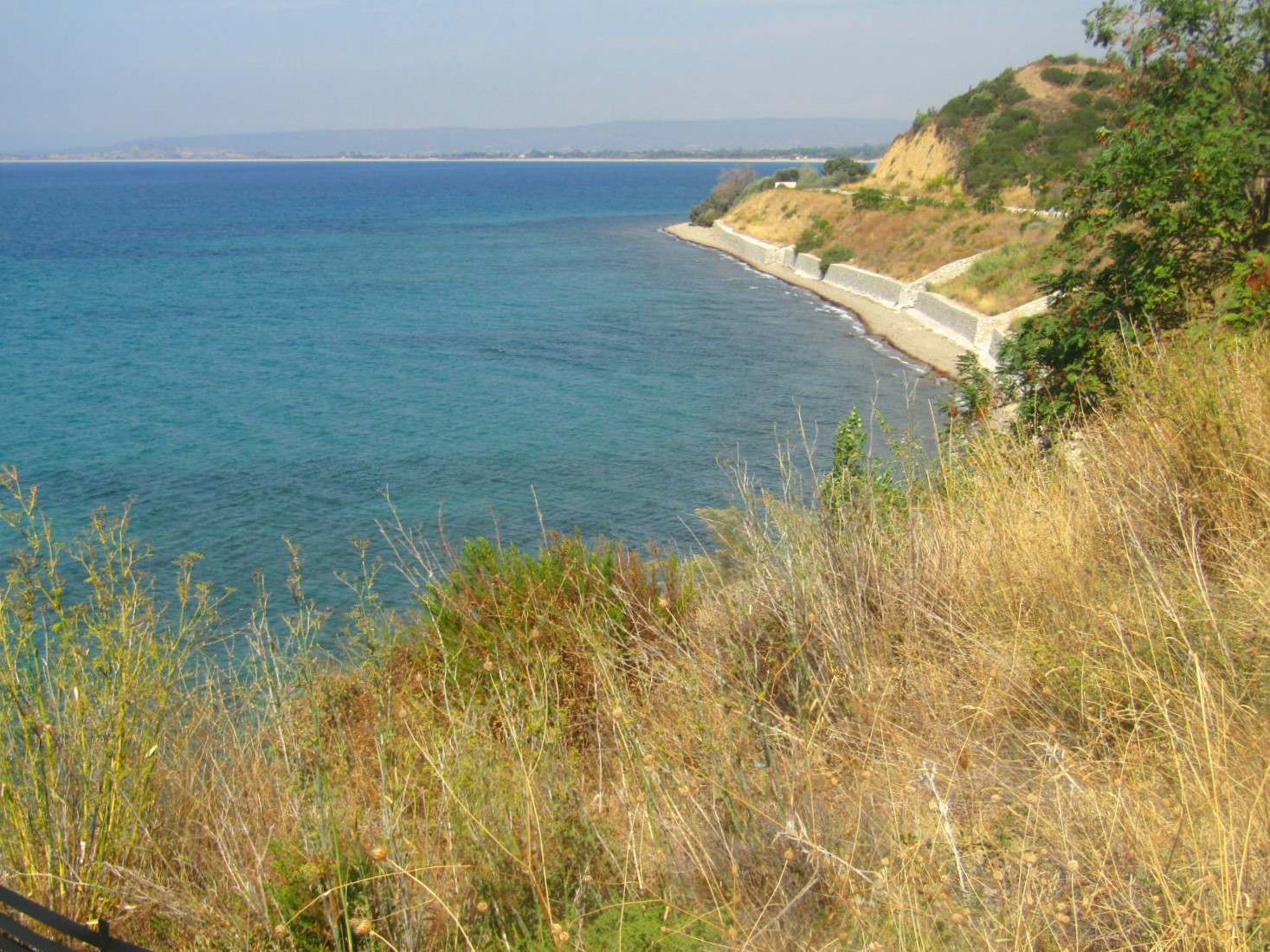
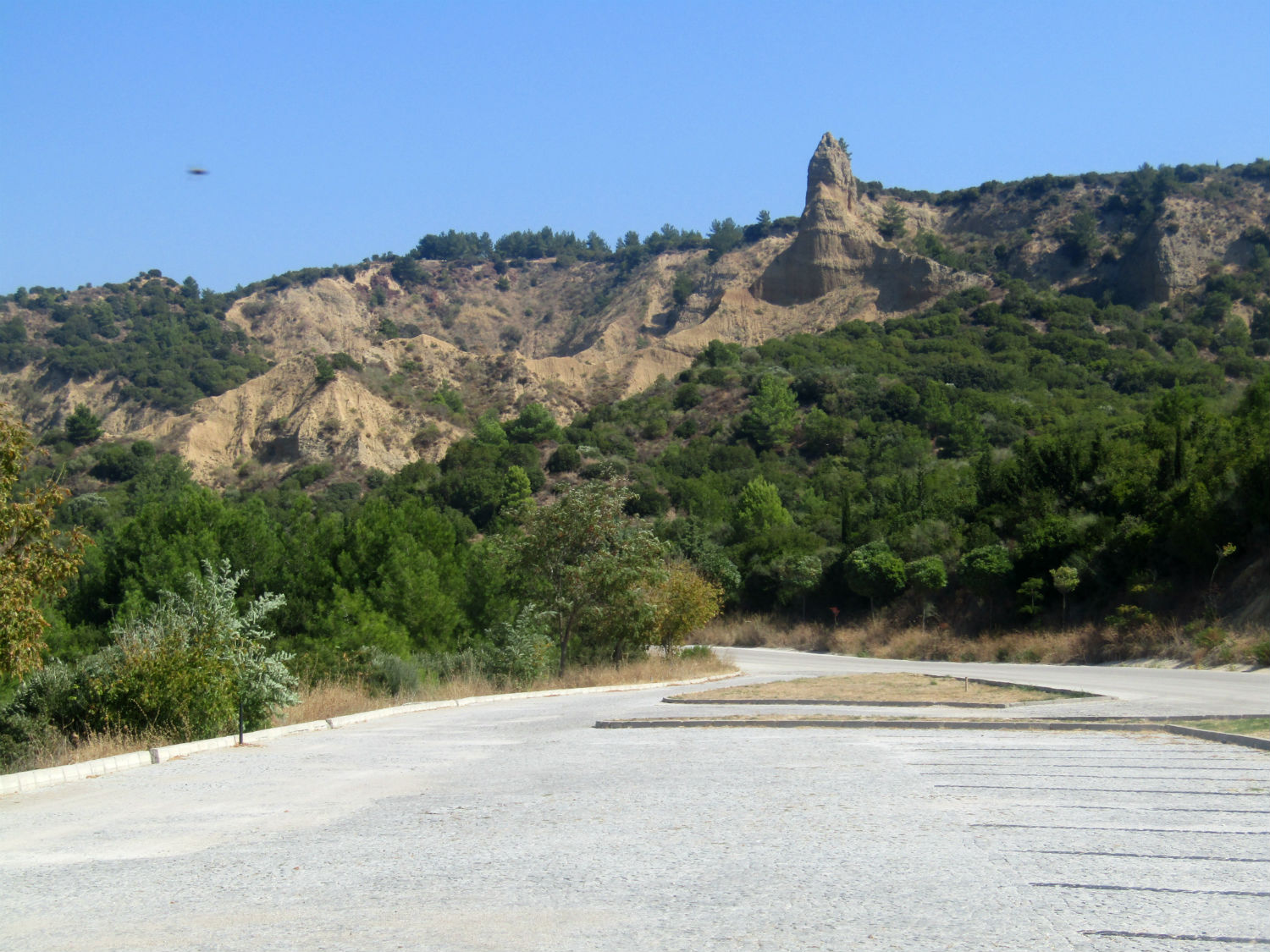
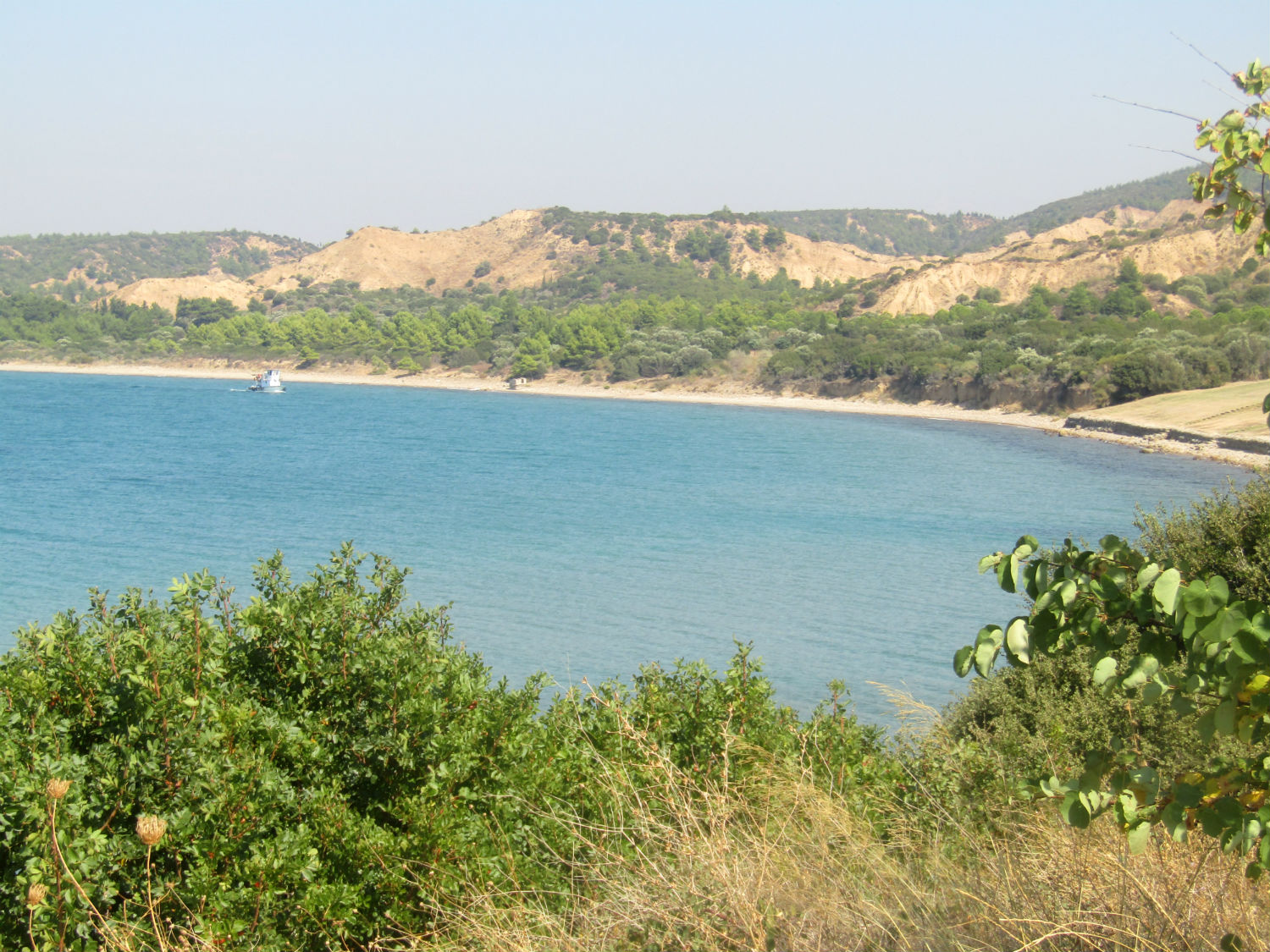
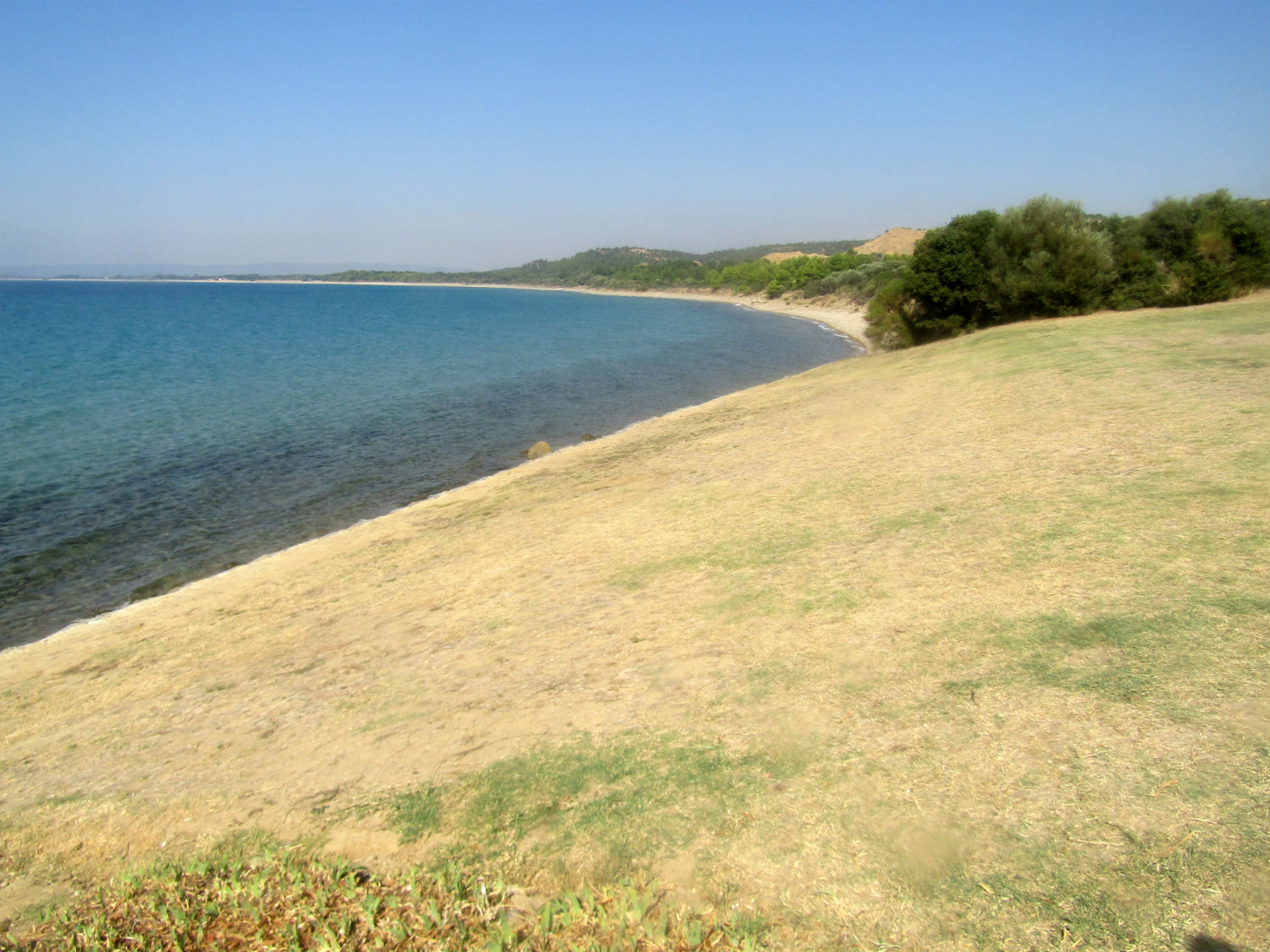 Anzac Cove, Eceabat District, Çanakkale Province
Anzac Cove, Eceabat District, Çanakkale Province
Y 11, Shell Green Cemetery……..The Allies landed on the peninsula on 25-26 April 1915; the 29th Division at Cape Helles in the south and the Australian and New Zealand Corps north of Gaba Tepe on the west coast, an area soon known as Anzac. On 6 August, further landings were made at Suvla, just north of Anzac, and the climax of the campaign came in early August when simultaneous assaults were launched on all three fronts. Shell Green was captured, and passed, by the 8th Australian Infantry Battalion on the morning of 25 April, but it remained close to the Turkish line throughout the campaign and was subject to frequent shelling. The cemetery was used from May to December 1915, largely by the Australian Light Horse and the 9th and 11th Infantry Battalions. It was originally two cemeteries a short distance apart, but after the Armistice the two were combined and enlarged when graves were brought in from the battlefields and from the following 4 smaller cemeteries:- ARTILLERY ROAD CEMETERY and ARTILLERY ROAD EAST CEMETERY, contained 21 Australian graves of April and May 1915. These were North-East from Shell Green, between the 'Artillery Road,' which led up from Shell Green to Brown's Dip, and the front-line trench near the wheatfield. WRIGHT'S GULLY CEMETERY, was south of Shell Green, near Chatham's Post. It contained the graves of eight men of the 5th Australian Light Horse who fell on 28 June 1915. THE EIGHTH BATTERY CEMETERY, was half-way between Shell Green and Hell Spit, containing the graves of seven men of the 8th Battery, Australian Field Artillery. In addition in March 1927, the graves of 20 sailors and soldiers who died in 1922 and 1923 were removed from Kelia Liman (Kilye Bay), near Maidos, and reburied here between the Artillery Road Plot and Row G of Plot II. The cemetery now contains 409 First World War burials, 11 of them unidentified.

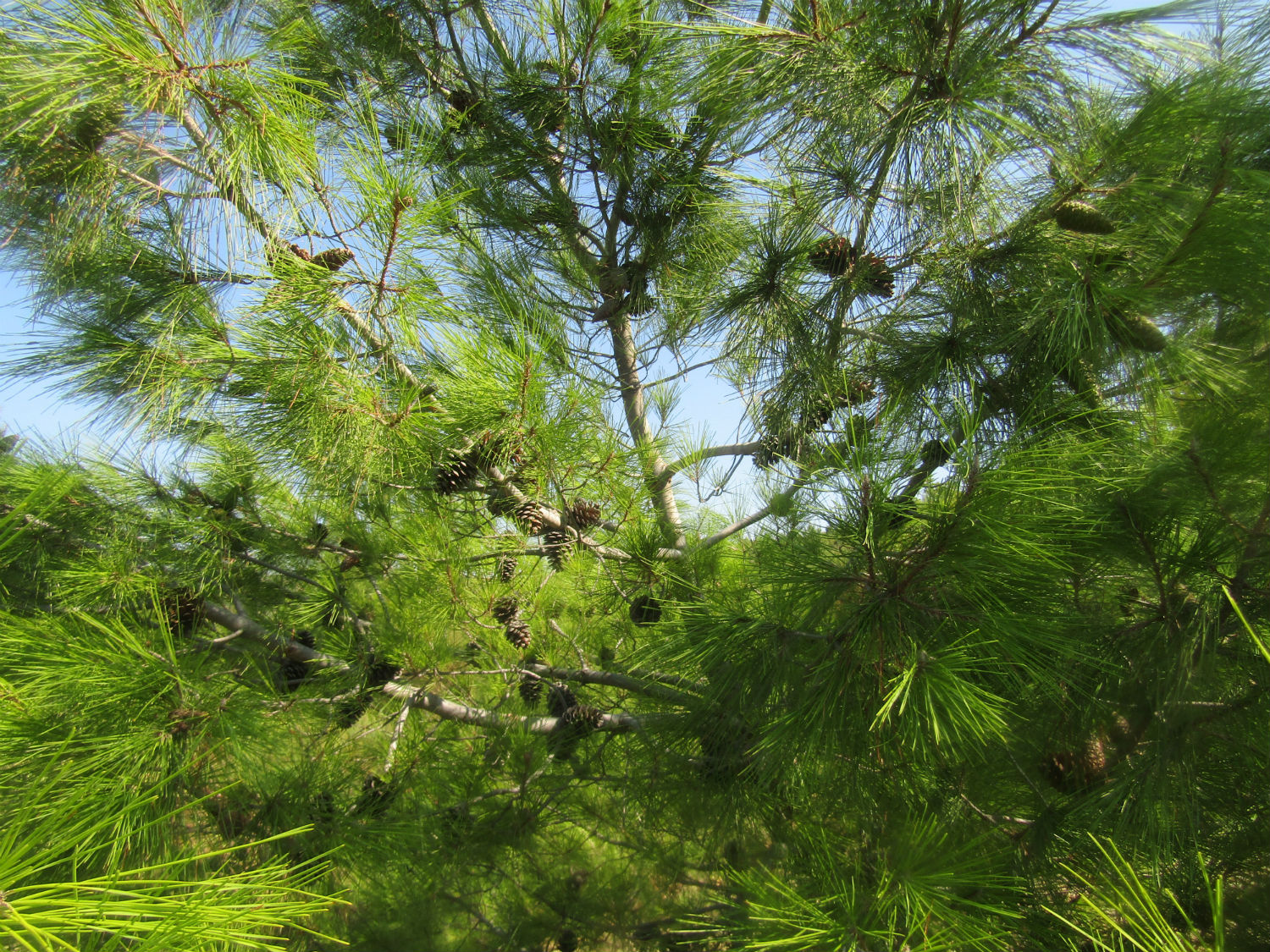

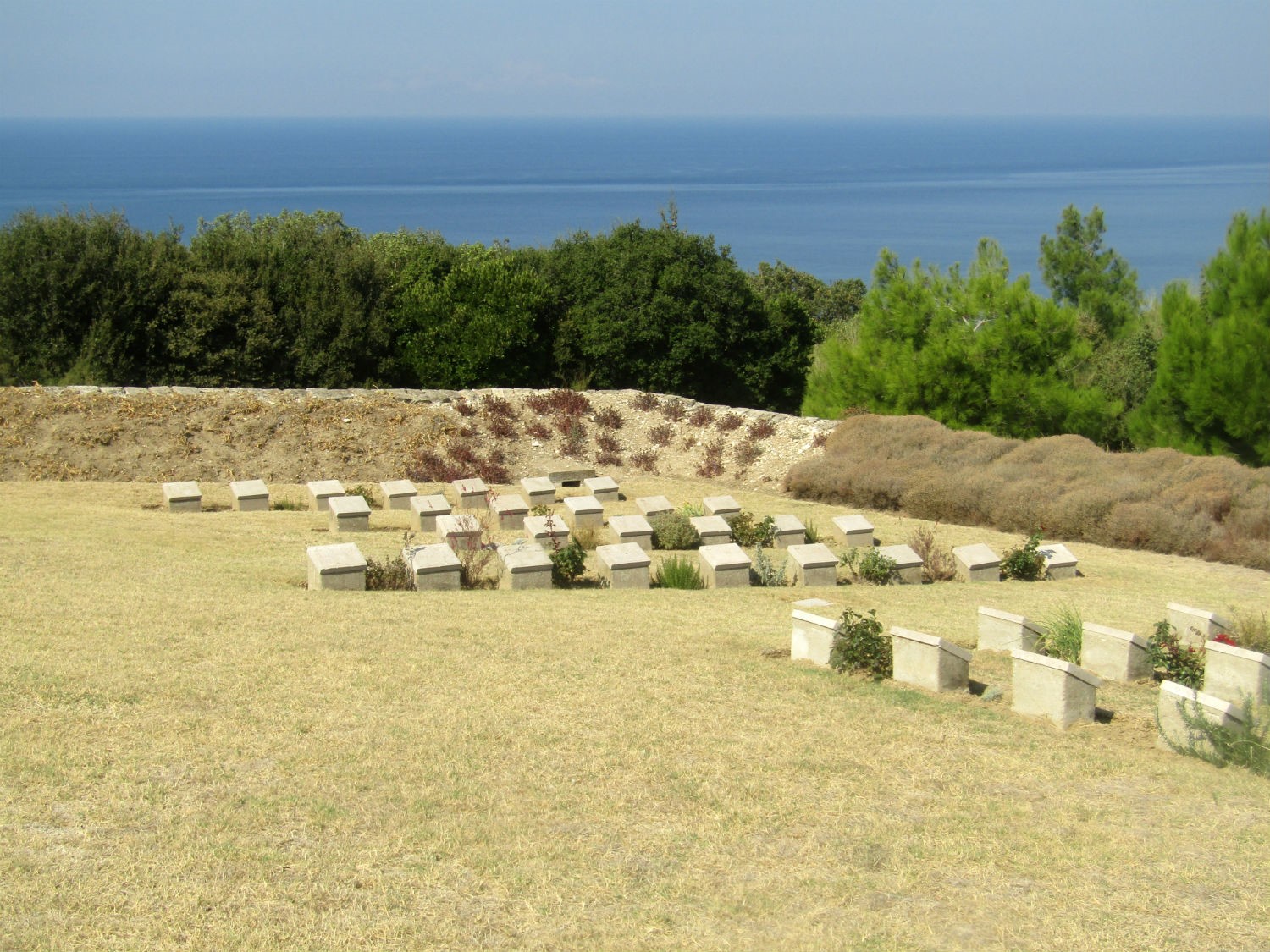

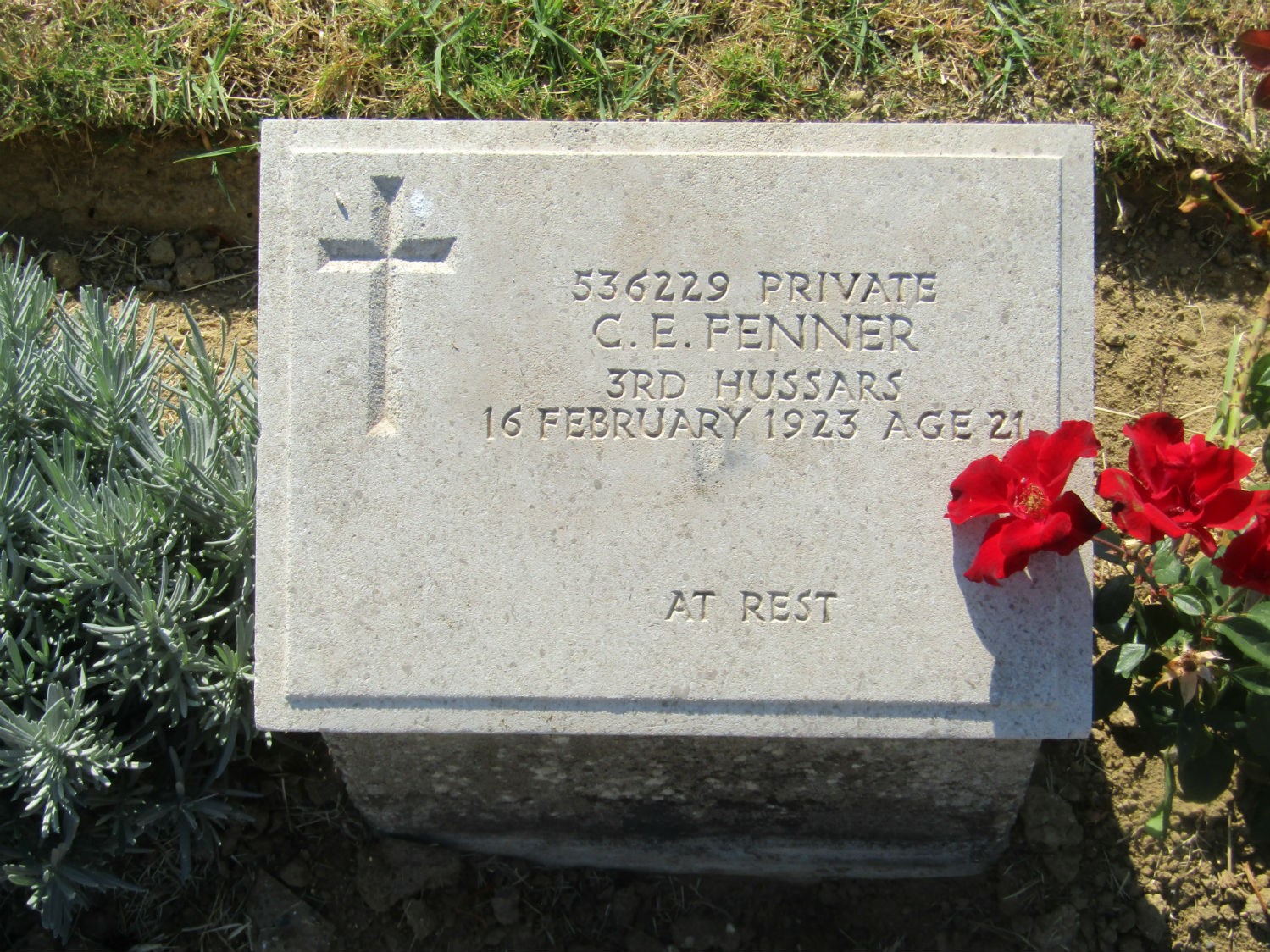


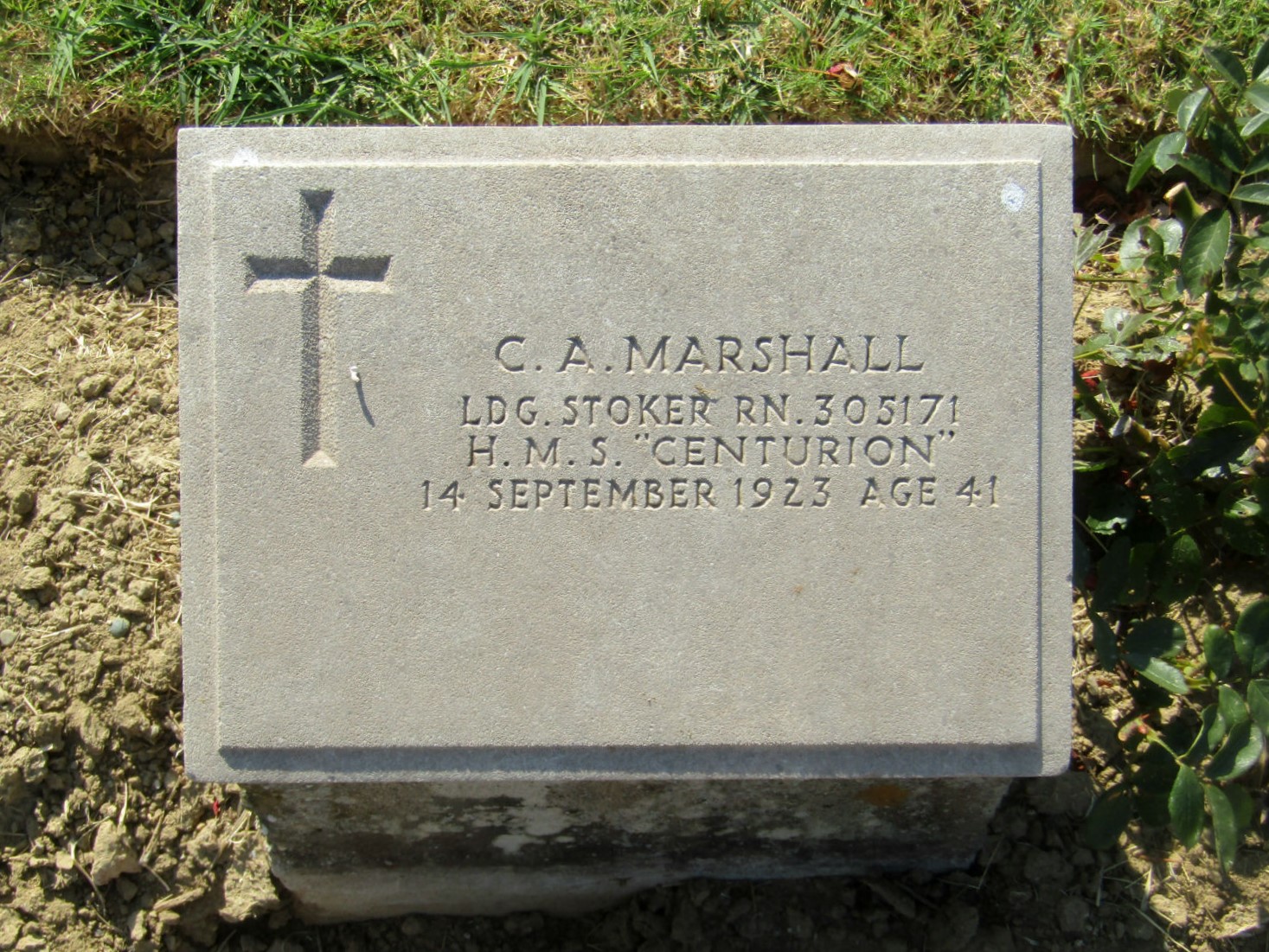 Shell Green Cemetery, Anzac Cove, Eceabat District, Çanakkale Province
Shell Green Cemetery, Anzac Cove, Eceabat District, Çanakkale ProvinceNote: the graves of soldiers/sailors shown above are among those mentioned as having been removed from Kelia Liman (Kilye Bay), near Maidos. Maidos appears to be the Greek name for Eceabat. All these casualties occurred during the Allied occupation of Contantinople (Istanbul). In particular an incident occurred in September 1922 when a Turkish Nationalist Force marched into the neutral zone controlled by the British at Çanakkale. This crisis became known as the Chanak Affair and the Chanak Incident. Although burried in Shell Green Cemetery, the graves are not recorded on the CWGC register for the war.
Y 13, Shrapnel Valley Cemetery……..The Allies landed on the peninsula on 25-26 April 1915; the 29th Division at Cape Helles in the south and the Australian and New Zealand Corps north of Gaba Tepe on the west coast, an area soon known as Anzac. Shrapnel Valley (or Shrapnel Gully) runs from the West side of the Lone Pine Plateau, behind Maclagan's Ridge, South-Westwards to the sea near Hell Spit (Queensland Point). The upper part was called Monash Gully (after Sir John Monash, then commanding the 4th Australian Infantry Brigade). The route up Shrapnel Valley was an essential road from the beach to the Anzac front and it took its name from the heavy shelling it was given by the Turks on 26 April 1915. Wells were sunk there and water obtained in small quantities, and there were camps and depots on the south side of its lower reaches. Gun positions were made near its mouth. The cemetery was made mainly during the occupation, but some isolated graves were brought in from the valley after the Armistice. There are now 683 Commonwealth servicemen buried or commemorated in this cemetery. 85 of the burials are unidentified but special memorials commemorate 23 casualties known or believed to be buried among them.

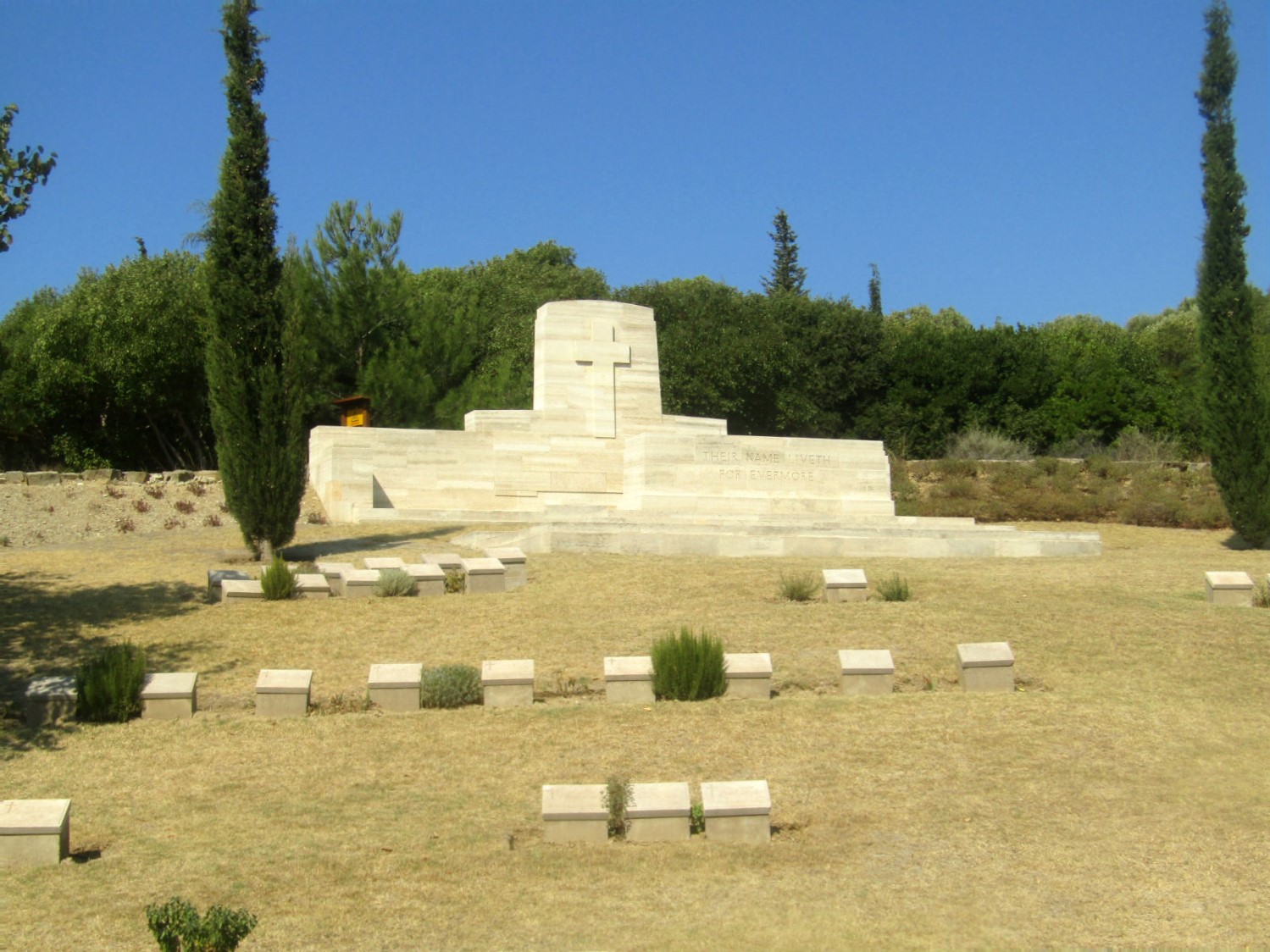
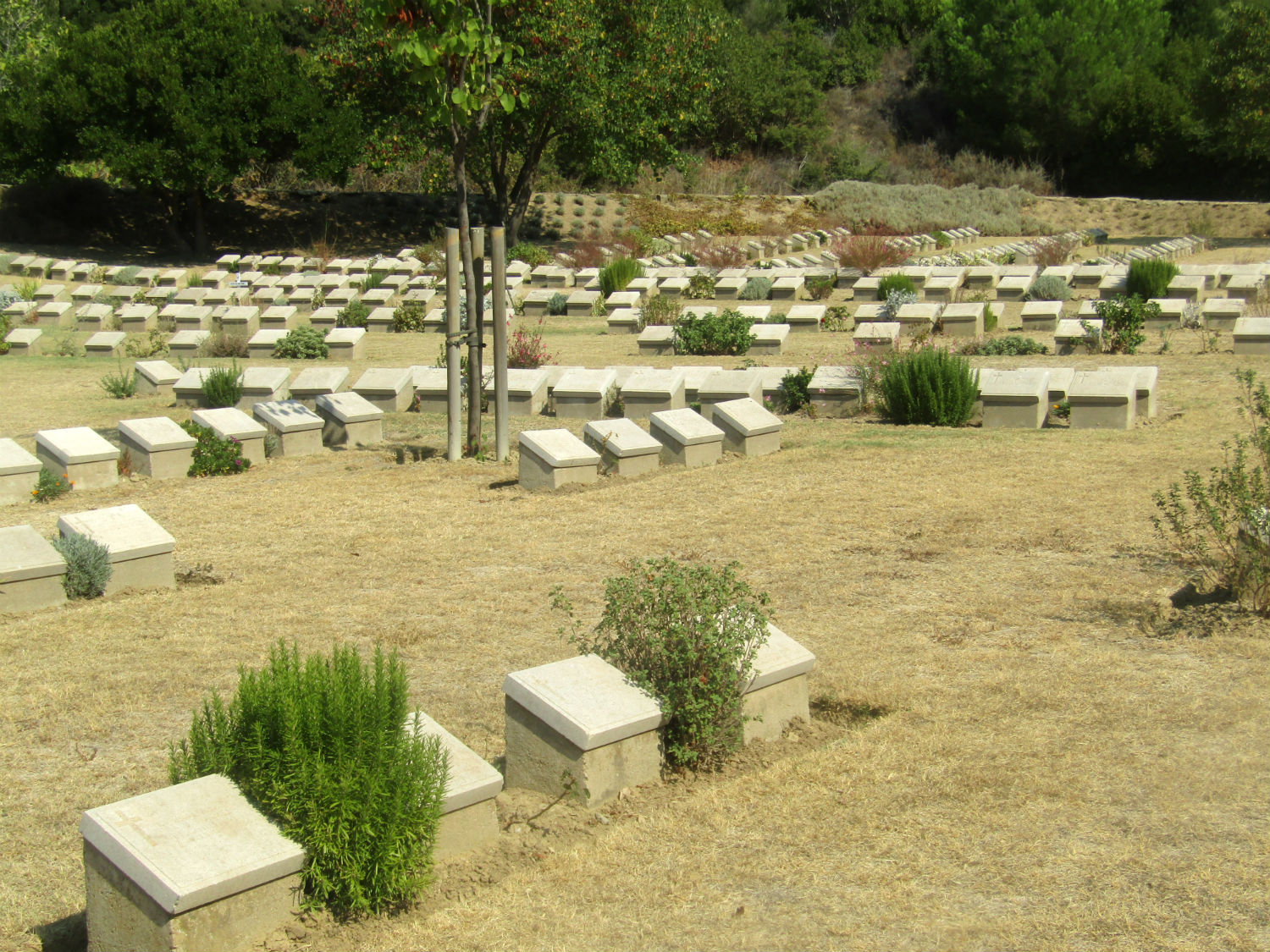 Shrapnel Valley Cemetery, Anzac Cove, Eceabat District, Çanakkale Province
Shrapnel Valley Cemetery, Anzac Cove, Eceabat District, Çanakkale Province
Y 14, Plugge’s Plateau Cemetery……..The Allies landed on the peninsula on 25-26 April 1915; the 29th Division at Cape Helles in the south and the Australian and New Zealand Corps north of Gaba Tepe on the west coast, an area soon known as Anzac. Plugge's Plateau was captured by the 3rd Australian Infantry Brigade on 25 April and named later from the commander of Auckland Battalion, Colonel A. Plugge, CMG, whose headquarters were there. It became a battery position, a reservoir, and a position on the 'Inner Line' of defences. The Anzac Headquarters were on its western slopes. The cemetery contains 21 First World War burials, four of them unidentified.
Y 12, Beach Cemetery……..The Allies landed on the peninsula on 25-26 April 1915; the 29th Division at Cape Helles in the south and the Australian and New Zealand Corps north of Gaba Tepe on the west coast, an area soon known as Anzac. Beach Cemetery was used from the day of the landing at Anzac, almost until the evacuation. There are 391 Commonwealth servicemen of the First World War buried or commemorated in the cemetery. Special memorials commemorate 11 casualties believed to be buried among them. 22 of the burials are unidentified.
Y 12, Beach Cemetery……..The Allies landed on the peninsula on 25-26 April 1915; the 29th Division at Cape Helles in the south and the Australian and New Zealand Corps north of Gaba Tepe on the west coast, an area soon known as Anzac. Beach Cemetery was used from the day of the landing at Anzac, almost until the evacuation. There are 391 Commonwealth servicemen of the First World War buried or commemorated in the cemetery. Special memorials commemorate 11 casualties believed to be buried among them. 22 of the burials are unidentified.

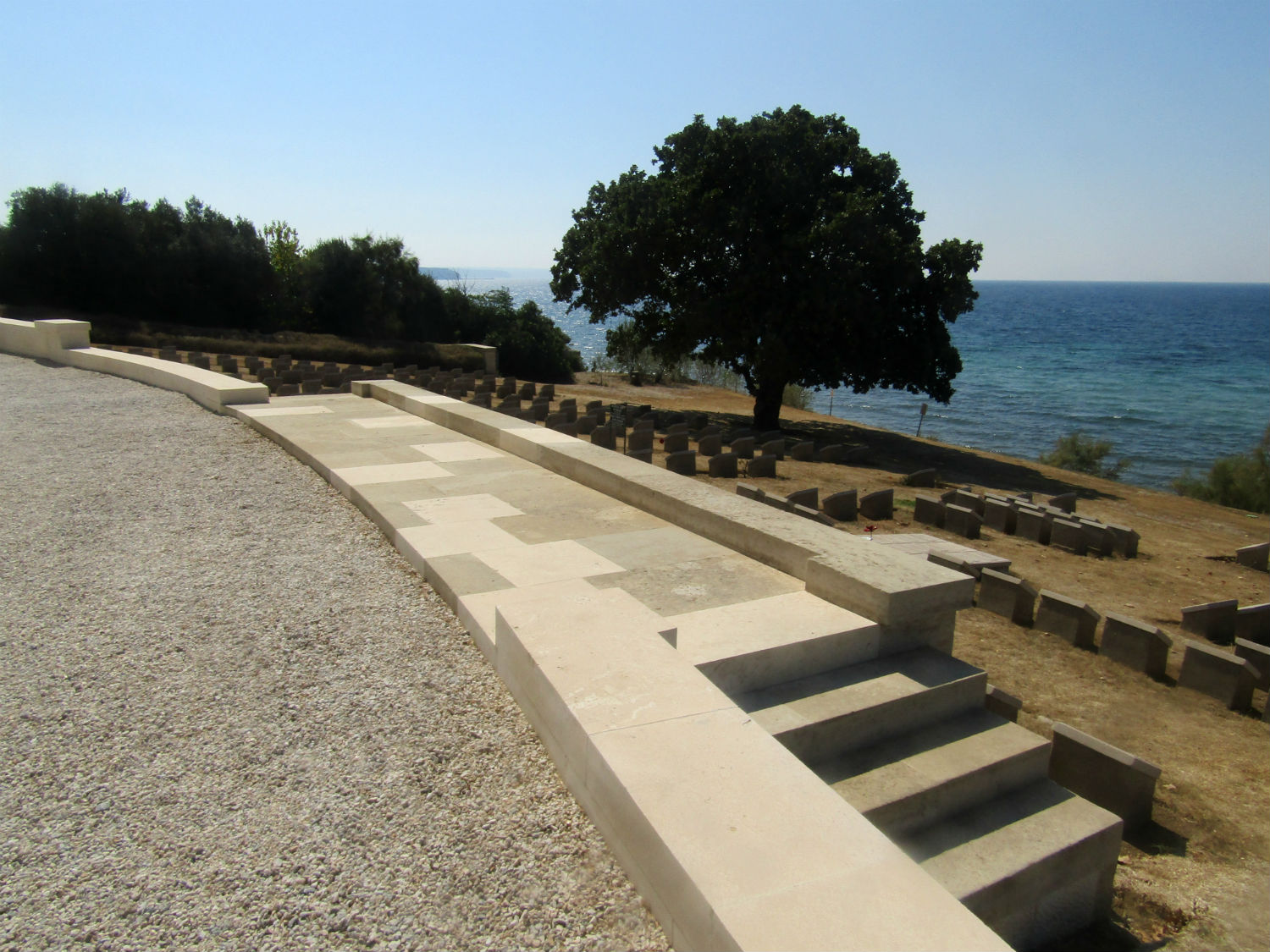
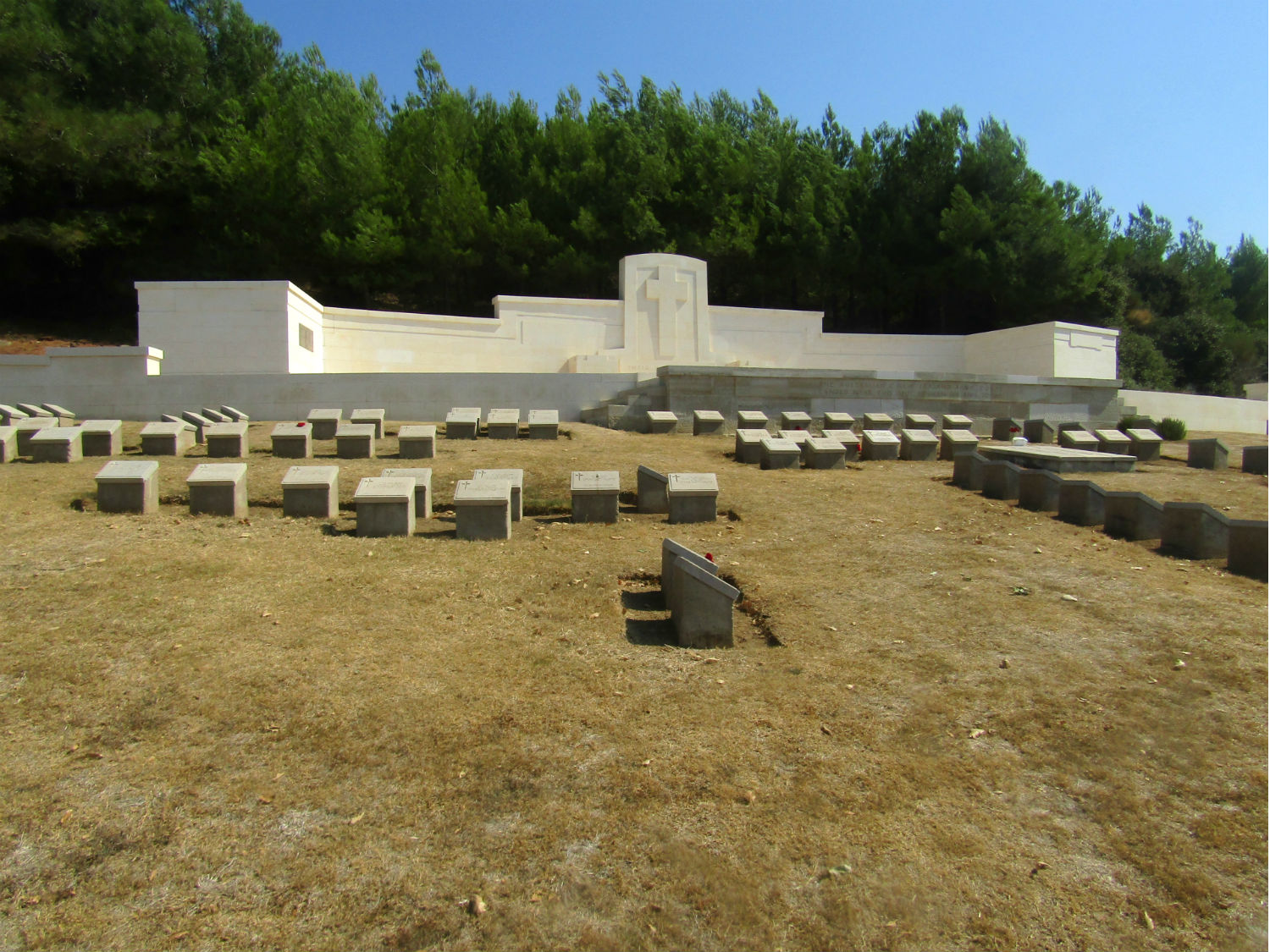 Beach Cemetery, Anzac Cove, Eceabat District, Çanakkale Province
Beach Cemetery, Anzac Cove, Eceabat District, Çanakkale Province
Y 15, Ariburnu Cemetery……..The Allies landed on the peninsula on 25-26 April 1915; the 29th Division at Cape Helles in the south and the Australian and New Zealand Corps north of Gaba Tepe on the west coast, an area soon known as Anzac. Ari Burnu Cemetery, named from the Cape at the North end of Anzac Cove, was made in 1915. In 1926 and 1927, graves were brought into it from the following two cemeteries:- KILID BAHR ANGLO-FRENCH CEMETERY, which was on the Eastern side of the Peninsula. It contained the graves of five soldiers and one sailor from the United Kingdom, four soldiers from Australia, and four (including one unidentified) from India. Six of these men died in 1915 and were buried originally in the Greek cemeteries at Bigha and Maidos or in the field; the others died in November 1918. GALLIPOLI CONSULAR CEMETERY, was near the North end of the Peninsula. This contained (among Crimean and other British graves) three soldiers from the United Kingdom who died in 1919. There are now 252 Commonwealth servicemen of the First World War buried or commemorated in this cemetery. 42 of the burials are unidentified but special memorials commemorate five casualties believed to be buried among them. Other memorials record the names of three Indian soldiers who were buried at Kilid Bahr.
Y 16, North Beach Anzac Commemorative Site
Y 16, North Beach Anzac Commemorative Site

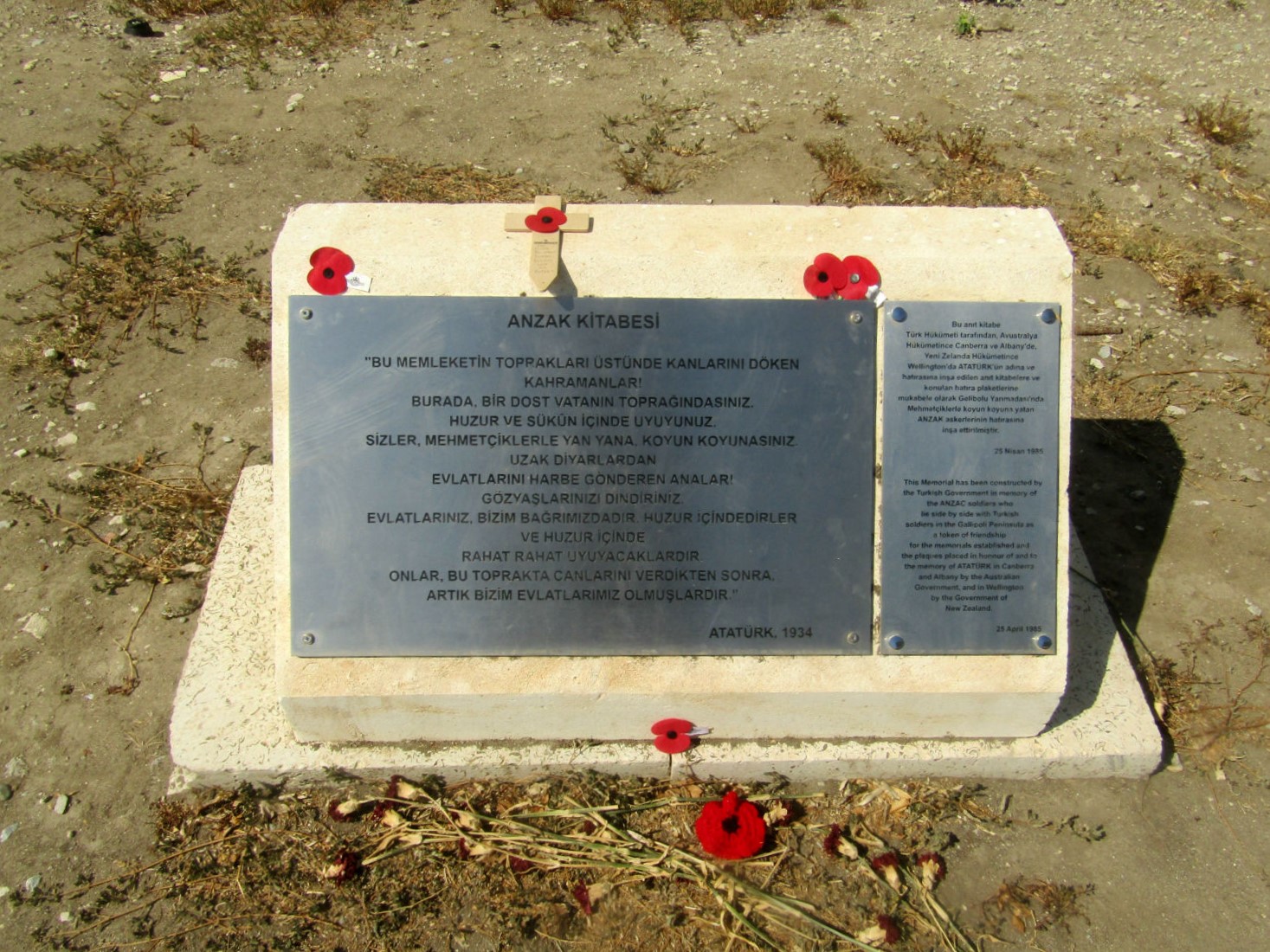
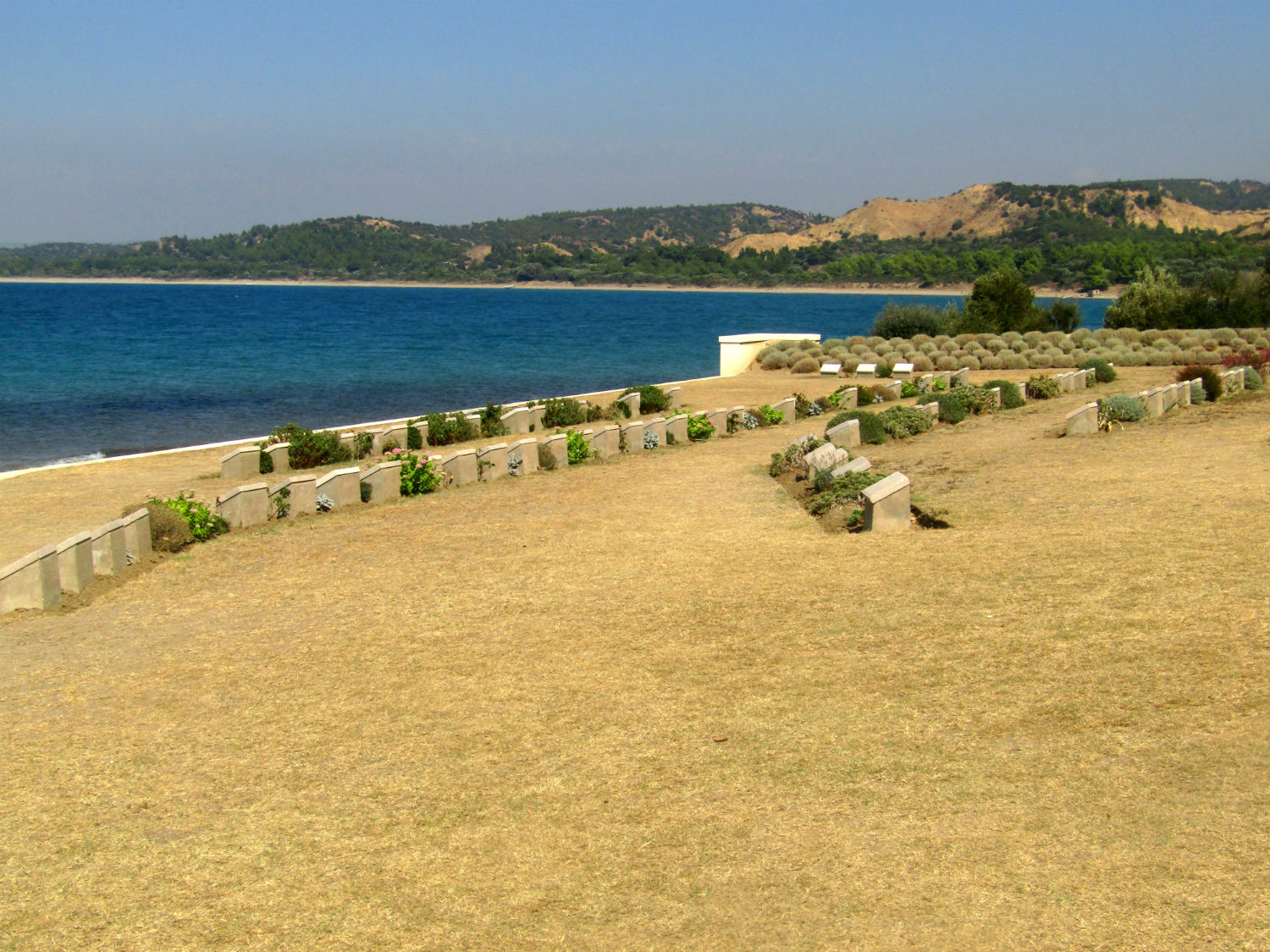
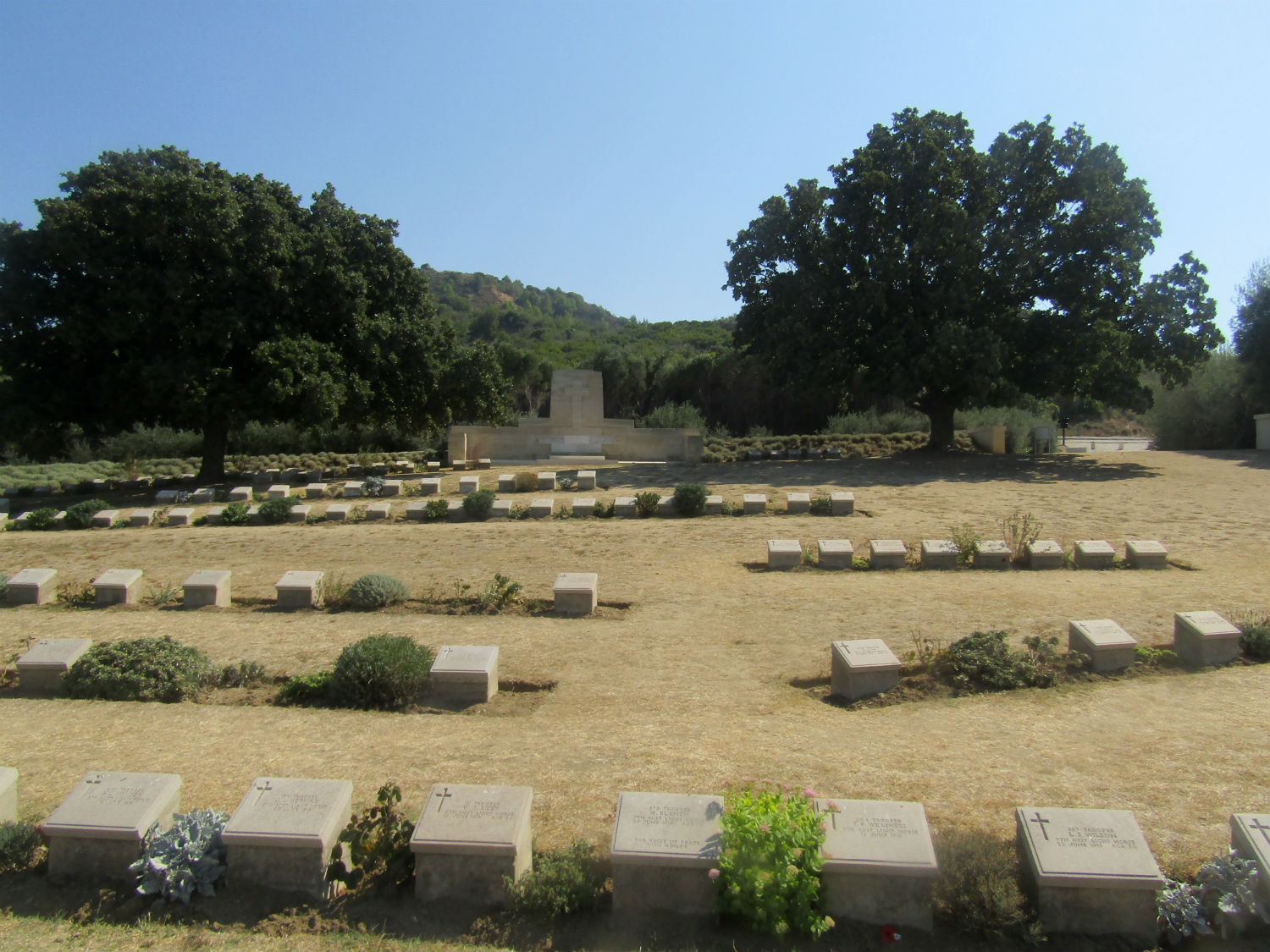
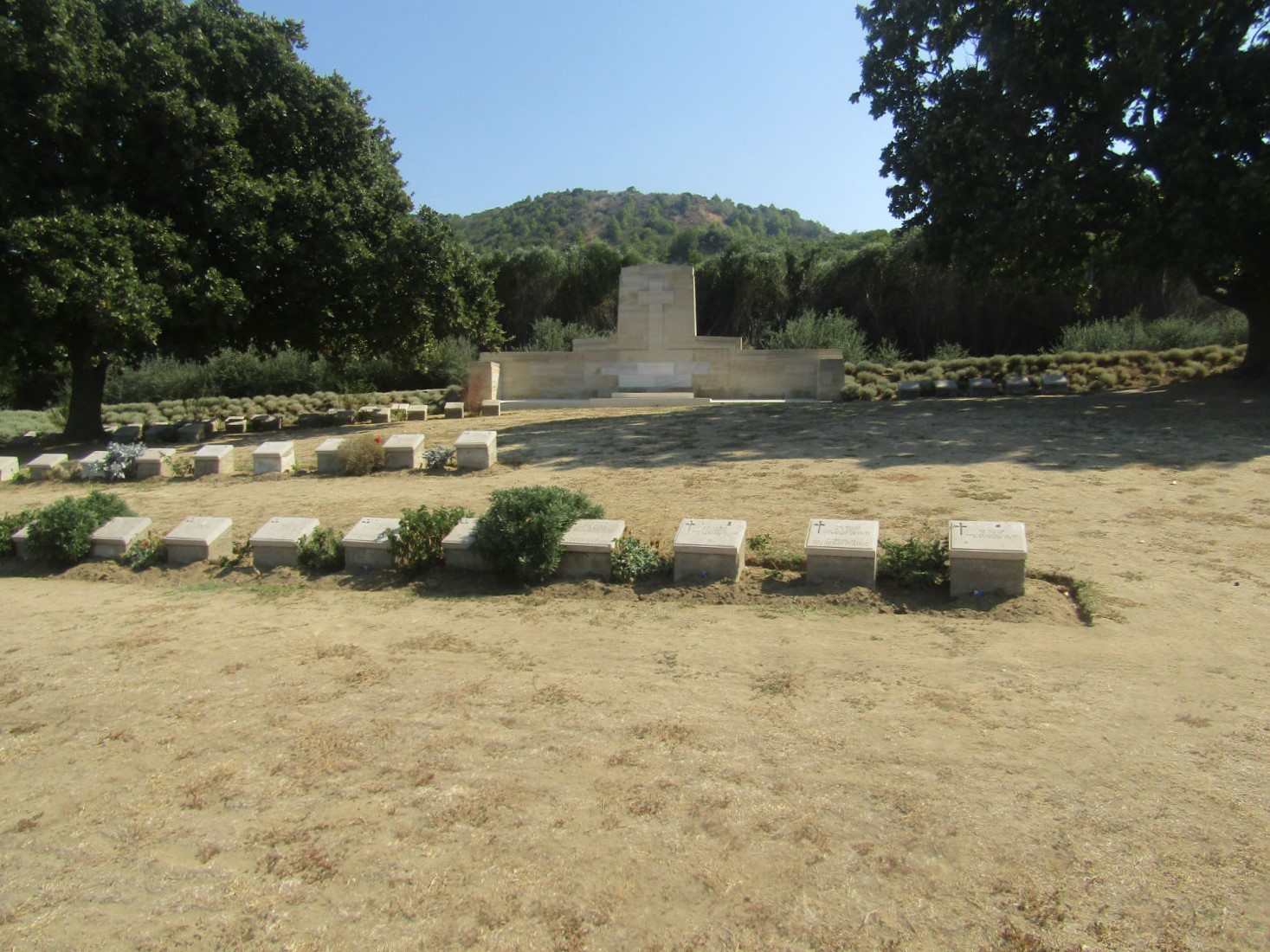
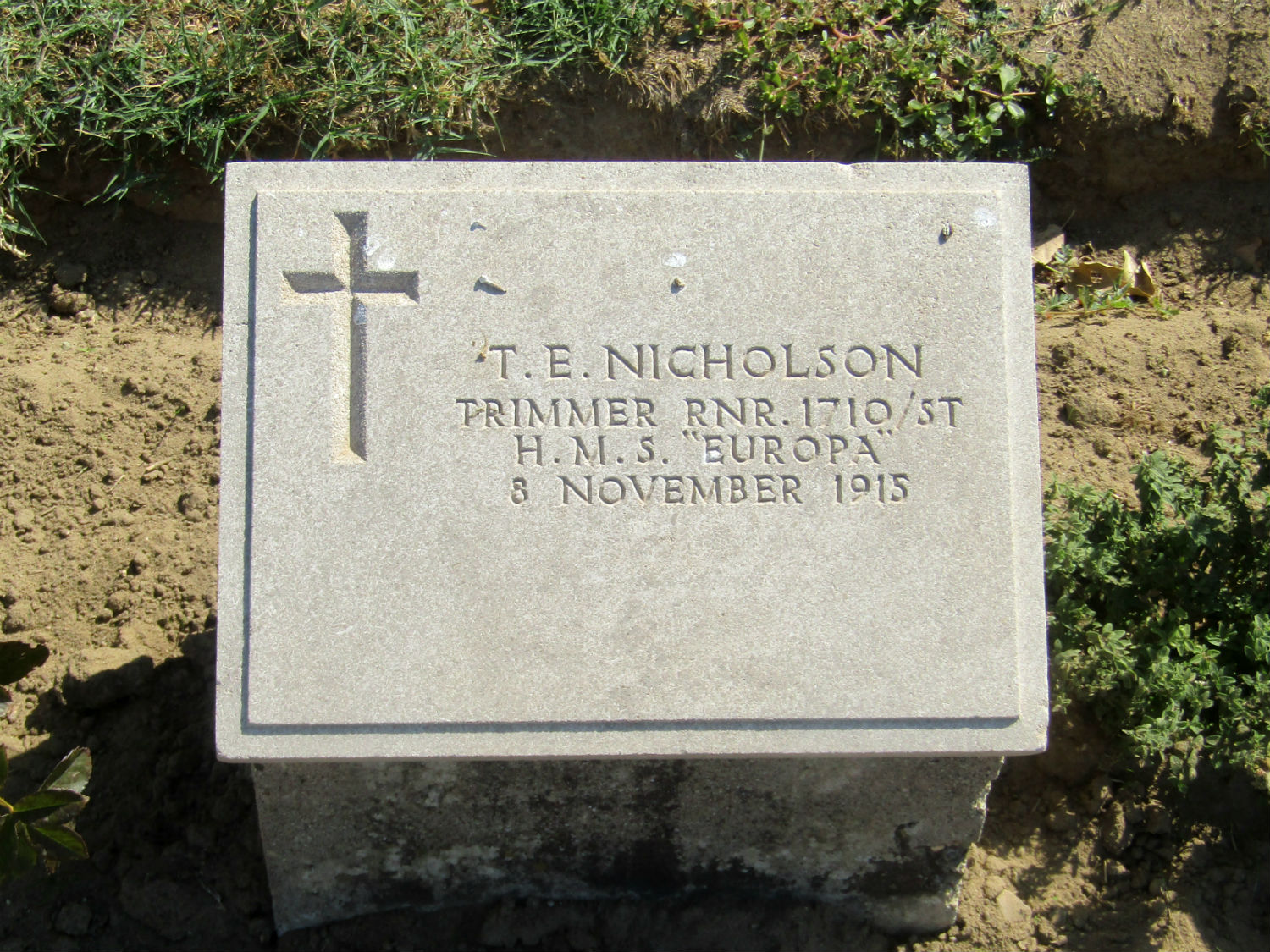 Ariburnu Cemetery, Anzac Cove, Eceabat District, Çanakkale Province
Ariburnu Cemetery, Anzac Cove, Eceabat District, Çanakkale Province
Inscription on the Monolith near the Ariburnu Cemetery (top left)
'Those heroes that shed their blood and lost their lives...You are now lying in the soil of a friendly country. Therefore rest in peace. There is no difference between the Johnnies and the Mehmets to us where they lie side by side here in this country of ours....You, the mothers, who sent their sons from faraway countries, wipe away your tears; your sons are now lying in our bosom and and are in peace, after having lost their lives on this land, they have become our sons as well.'
Atatürk, 1934
'Those heroes that shed their blood and lost their lives...You are now lying in the soil of a friendly country. Therefore rest in peace. There is no difference between the Johnnies and the Mehmets to us where they lie side by side here in this country of ours....You, the mothers, who sent their sons from faraway countries, wipe away your tears; your sons are now lying in our bosom and and are in peace, after having lost their lives on this land, they have become our sons as well.'
Atatürk, 1934
Y 16, North Beach Anzac Commemorative Site……..To relieve the pressure on the traditional Dawn Service site at Ari Burnu War Cemetery caused by increasing numbers of visitors, the Australian and New Zealand Governments, with the cooperation of the Government of the Republic of Turkey built the Anzac Commemorative Site at North Beach.
The Sphinx, a prominent outcrop so-named by the Anzacs on that first day, overlooks this site. At this site on North Beach, Australian troops of the 3rd Brigade, 1st Division AIF came ashore some minutes after the first landings at Ari Burnu and Anzac Cove to the south. They were followed by the 1st and 2nd Brigades and then by the New Zealand and Australian Division. North Beach was also a major casualty clearing station and resupply area during the campaign and the surviving Anzacs were evacuated from there during December 1915.

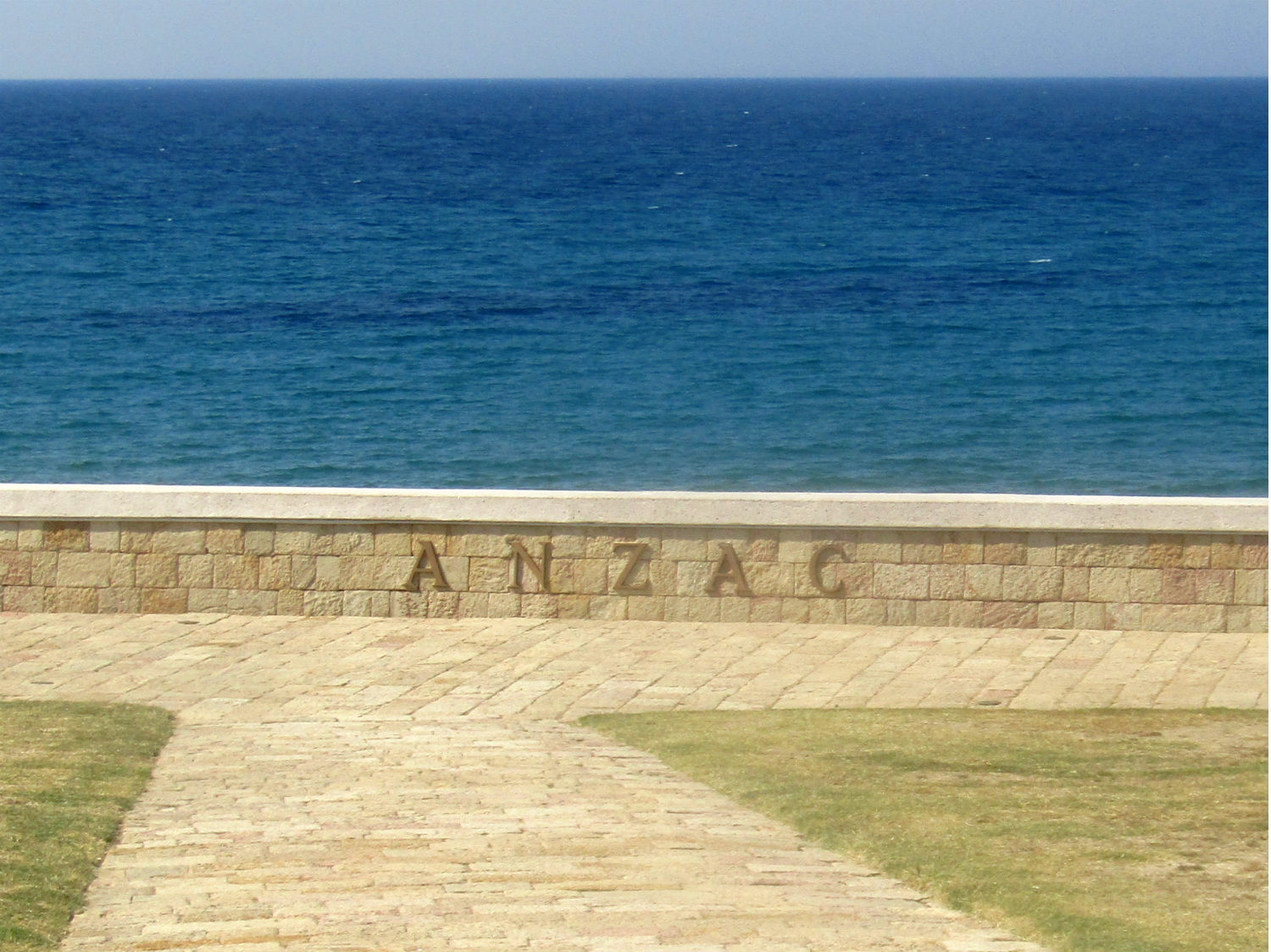
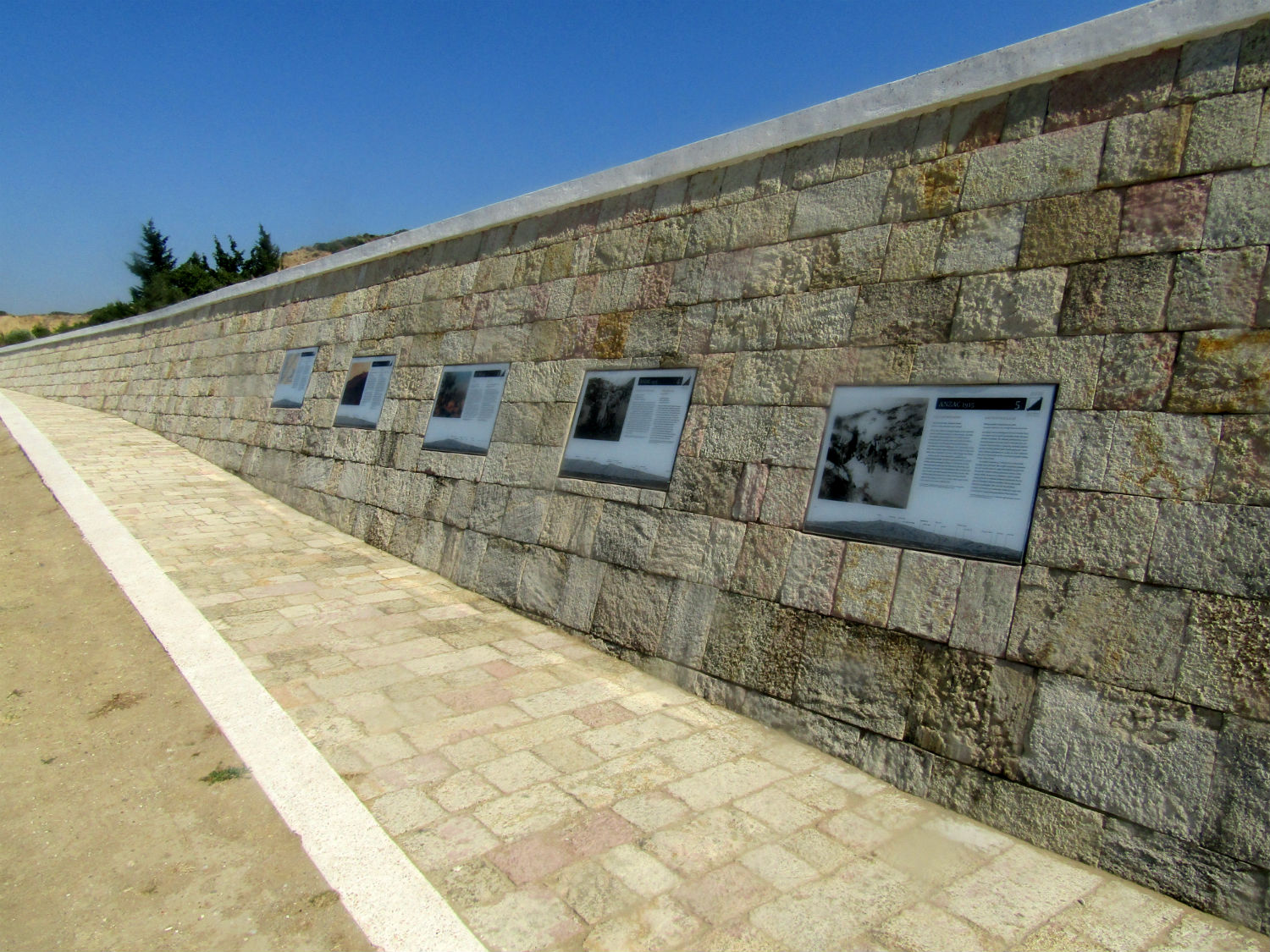


 North Beach Anzac Commemorative Site, Anzac Cove, Eceabat District, Çanakkale Province (the rock cliff in the background is known as the 'Sphinx')
North Beach Anzac Commemorative Site, Anzac Cove, Eceabat District, Çanakkale Province (the rock cliff in the background is known as the 'Sphinx')
Y 17, Canterbury Cemetery……..The Allies landed on the peninsula on 25-26 April 1915; the 29th Division at Cape Helles in the south and the Australian and New Zealand Corps north of Gaba Tepe on the west coast, an area soon known as Anzac. Canterbury Cemetery is one of the central cemeteries in Anzac and was made after the Armistice. It contains the graves of 27 Commonwealth Servicemen of the First World War, five of them unidentified. 20 of the graves are of men of the New Zealand Mounted Rifles (mostly the Canterbury Mounted Rifles).


 Canterbury Cemetery, Anzac Cove, Eceabat District, Çanakkale Province
Canterbury Cemetery, Anzac Cove, Eceabat District, Çanakkale Province
Y 18, No 2 Outpost Cemetery……..The Allies landed on the peninsula on 25-26 April 1915; the 29th Division at Cape Helles in the south and the Australian and New Zealand Corps north of Gaba Tepe on the west coast, an area soon known as Anzac. On 6 August, further landings were made at Suvla, just north of Anzac, and the climax of the campaign came in early August when simultaneous assaults were launched on all three fronts. No.1 and 2 Outposts were made by Nelson Company of the Canterbury Infantry Battalion on 30 April, for the burial of some of those killed when the 7th and 12th Australian Infantry Battalions landed nearby on 25 April. No.2 Post was the scene of heavy fighting at the end of May and it was one of the starting points for the Battle of Sari Bair. It contained the best well in Anzac and the 16th Casualty Clearing Station and the New Zealand Dental Corps clinic were established close by. No.2 Outpost Cemetery was made during the occupation and in it, 152 Commonwealth servicemen of the First World War are buried or commemorated. 66 of the burials are unidentified and special memorials commemorate 48 casualties known or believed to be buried among them.

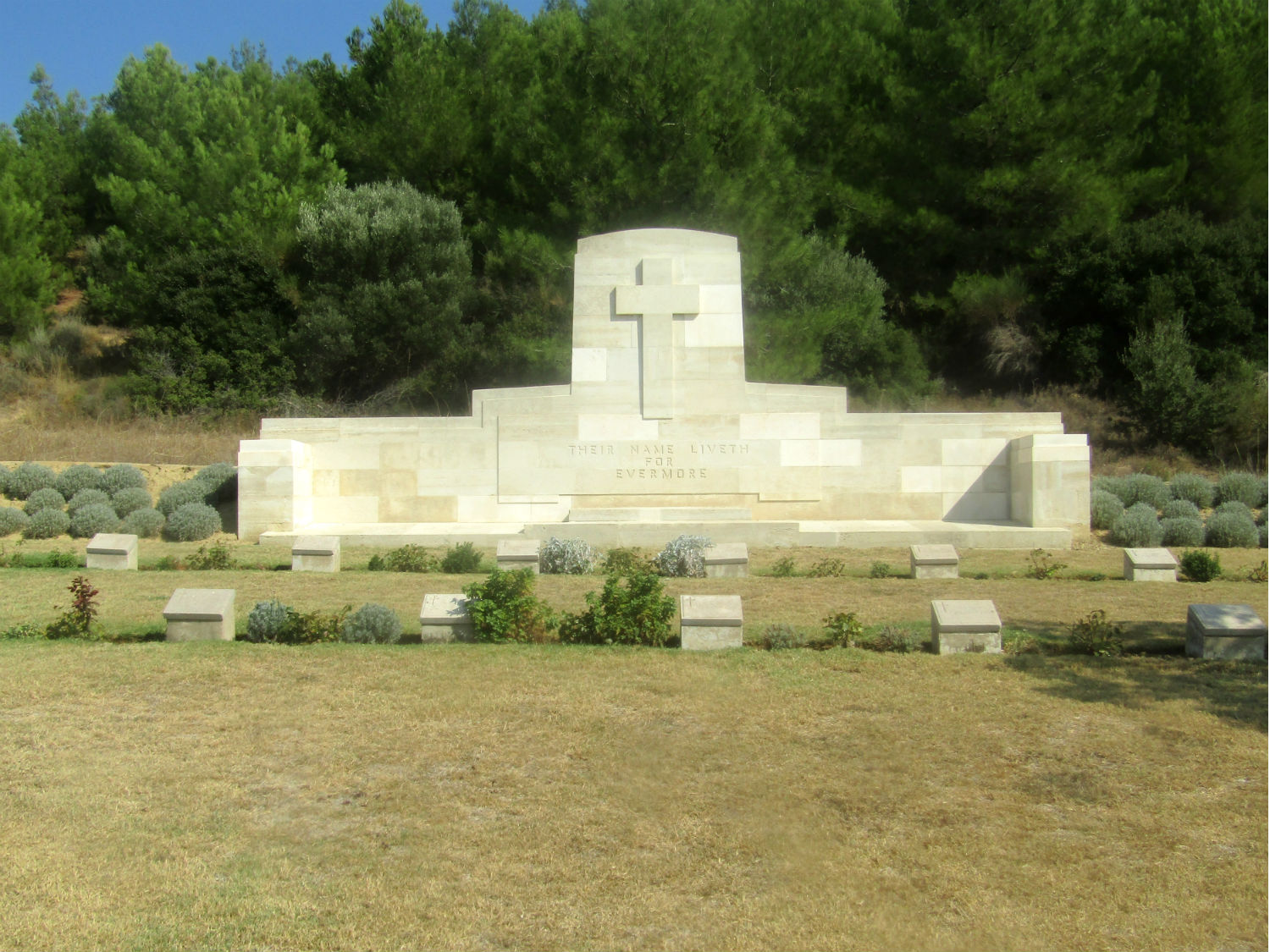
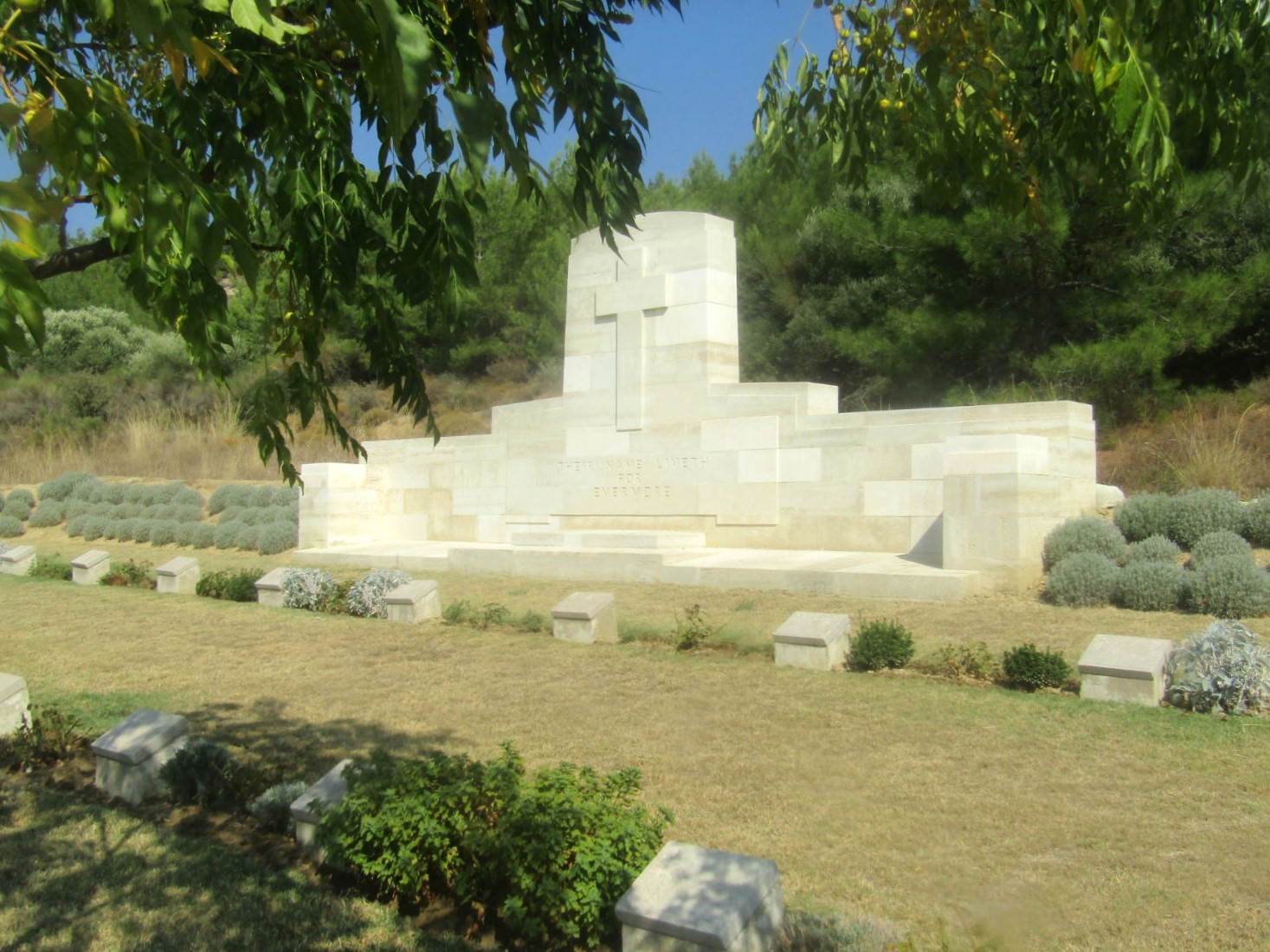 No 2 Outpost Cemetery, Anzac Cove, Eceabat District, Çanakkale Province
No 2 Outpost Cemetery, Anzac Cove, Eceabat District, Çanakkale Province
Y 19, New Zealand No 2 Outpost Cemetery……..The Allies landed on the peninsula on 25-26 April 1915; the 29th Division at Cape Helles in the south and the Australian and New Zealand Corps north of Gaba Tepe on the west coast, an area soon known as Anzac. On 6 August, further landings were made at Suvla, just north of Anzac, and the climax of the campaign came in early August when simultaneous assaults were launched on all three fronts. No.1 and 2 Outposts were made by Nelson Company of the Canterbury Infantry Battalion on 30 April, for the burial of some of those killed when the 7th and 12th Australian Infantry Battalions landed nearby on 25 April. No.2 Post was the scene of heavy fighting at the end of May and it was one of the starting points for the Battle of Sari Bair. It contained the best well in Anzac and the 16th Casualty Clearing Station and the New Zealand Dental Corps clinic were established close by. New Zealand No.2 Outpost Cemetery was named from the burials carried out by the Nelson Company and is, in fact, one long grave made in September 1915. There are 183 Commonwealth servicemen of the First World War buried or commemorated in this cemetery. 150 of the burials are unidentified and special memorials commemorate 31 casualties known or believed to be buried among them.


 New Zealand No 2 Outpost Cemetery, Anzac Cove, Eceabat District, Çanakkale Province
New Zealand No 2 Outpost Cemetery, Anzac Cove, Eceabat District, Çanakkale Province
Y 20, Embarkation Pier Cemetery……..The Allies landed on the peninsula on 25-26 April 1915; the 29th Division at Cape Helles in the south and the Australian and New Zealand Corps north of Gaba Tepe on the west coast, an area soon known as Anzac. On 6 August, further landings were made at Suvla, just north of Anzac, and the climax of the campaign came in early August when simultaneous assaults were launched on all three fronts. Early in August 1915, the Embarkation Pier area was occupied by the headquarters of two divisions, and later by the 16th (British) Casualty Clearing Station. The pier was made for the purpose of evacuating wounded from the Battle of Sari Bair, but it came under heavy rifle and shell fire and was abandoned after just two days. Apart from five original burials, the cemetery is made up of burials brought in after the Armistice from the cemeteries known as Chailak Dere Nos 1 and 2, Mulberry Tree, and Apex, and from isolated graves. There are now 944 Commonwealth servicemen buried or commemorated in the cemetery. There are special memorials to 262 casualties known or believed to be buried among them but 662 of the burials are unidentified.

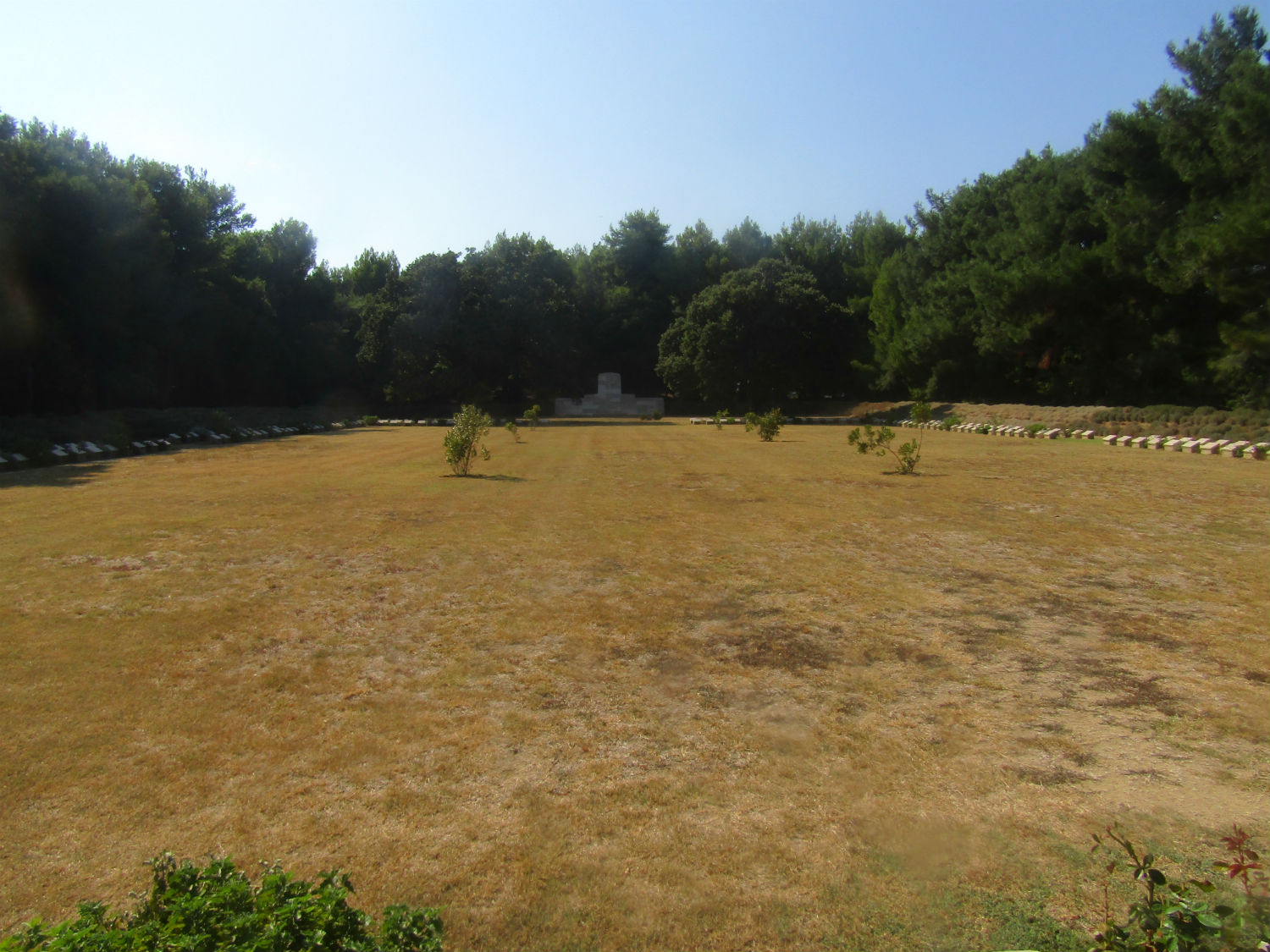
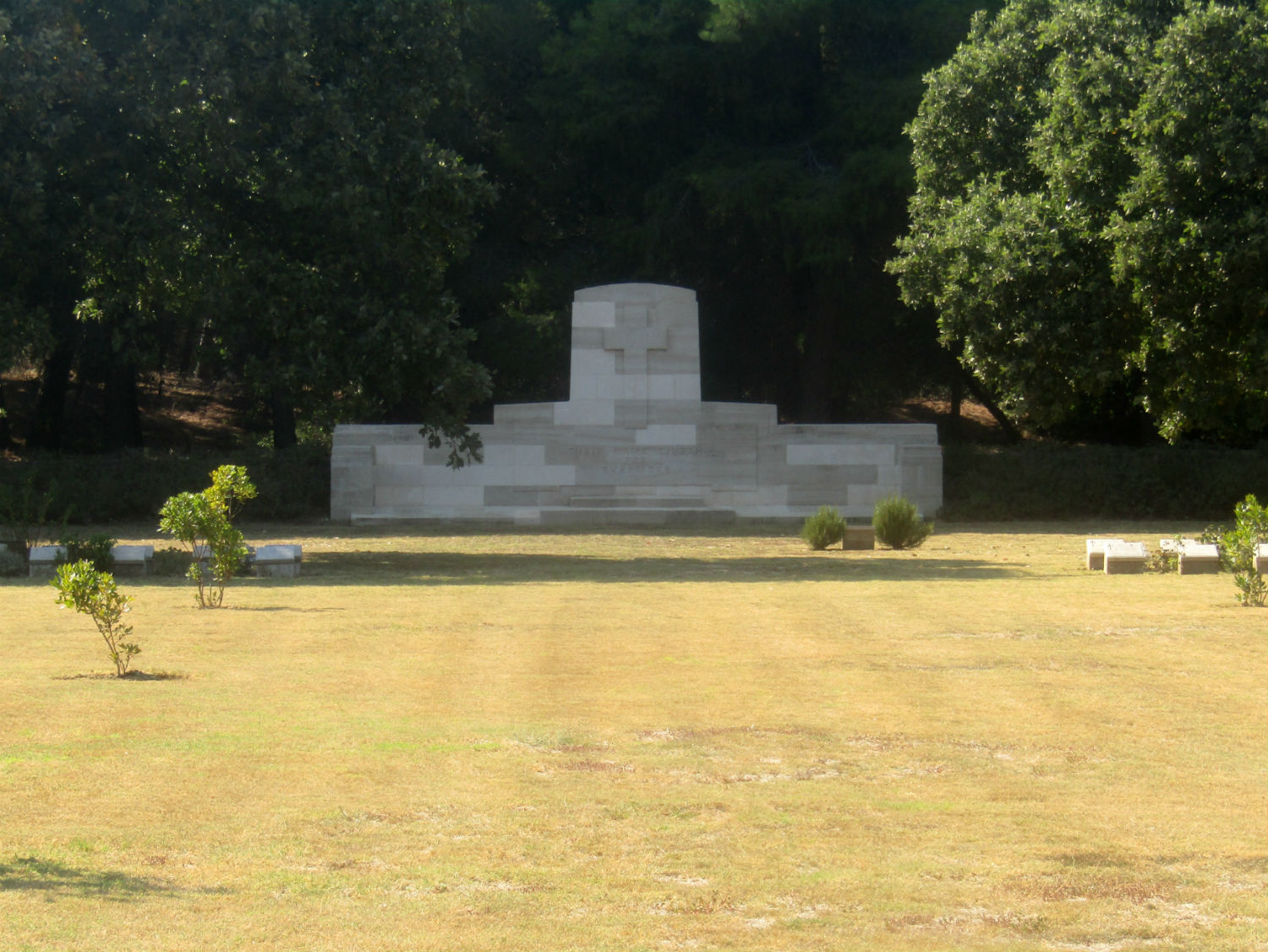

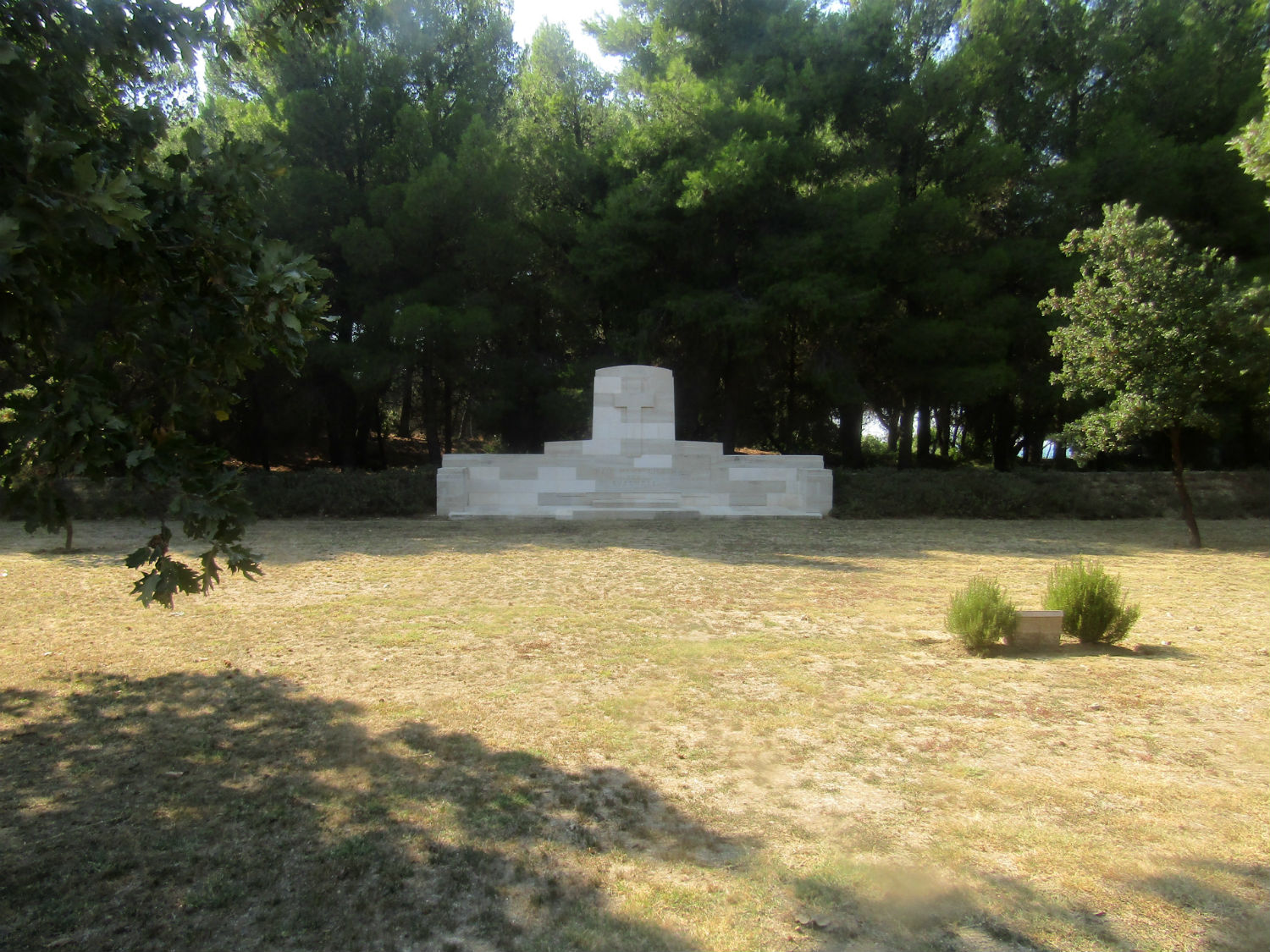
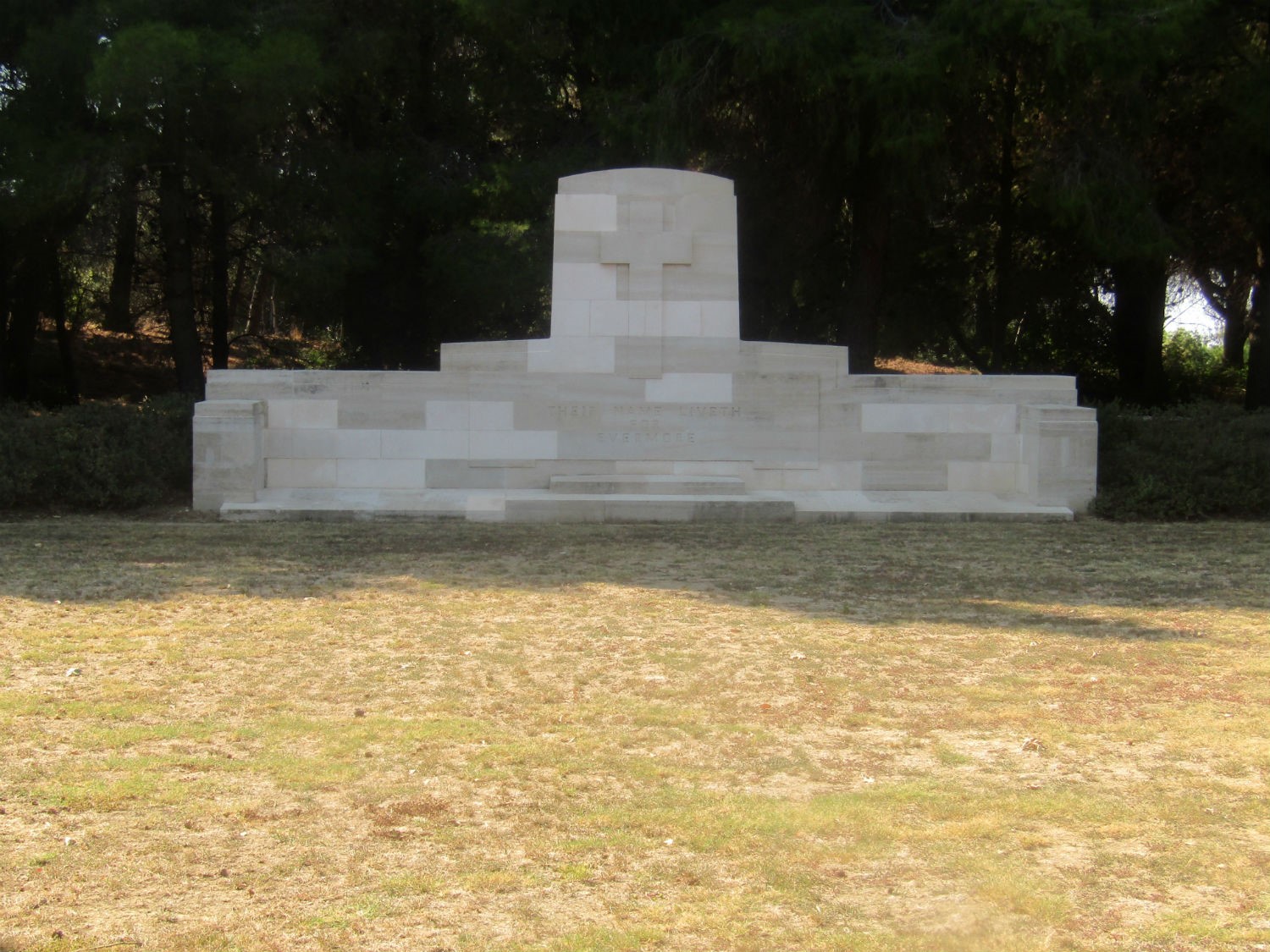 Embarkation Pier Cemetery, Anzac Cove, Eceabat District, Çanakkale Province
Embarkation Pier Cemetery, Anzac Cove, Eceabat District, Çanakkale Province
Suvla Bay……..After Y 20 (Embarkation Pier Cemetery), we head north out of the Anzac Cove area heading for a new destination Suvla Bay, the site of more landings later in the campaign in early August 1915.
Suvla is a bay on the Aegean coast of the Gallipoli peninsula in European Turkey, south of the Gulf of Saros.
On 6 August 1915, it was the site for the Landing at Suvla Bay by the British IX Corps as part of the August Offensive during the Battle of Gallipoli. The landing here and others at various points along the peninsula were designed to capture the peninsula from Turkish troops defending it, and to open the Dardanelles Straits to British warships, thus facilitating a planned naval attack on Constantinople (Istanbul). The Gallipoli campaign ended in failure and high casualties for the British side, which included numbers of Australians, New Zealanders, Indians, Irish, and Newfoundlanders.
The area is notable for viticulture and winemaking. The well-known wine producer "Suvla" is located here.
This is also an important area for Dave and myself since it was here on the 6th/7th August that our local regiment The 1/1st Herefords landed with the 53rd Welsh Division. Sadly they suffered the same fate as all previous attempts to reach their objectives.
Progress Checked…….. The Suvla Bay area could not be more different than Anzac Cove where the mountains come right down to the sea. This area is open with an inland salt lake offering little protection to troops landing. There are no natural roads, only tracks which are fortunately passable with our vehicle. However, proceeding along one of these tracks we hit an unexpected problem; they are putting in a new concrete road and our progress is checked. From here there is only one cemetery accessible by following another track along the coastline.
Suvla is a bay on the Aegean coast of the Gallipoli peninsula in European Turkey, south of the Gulf of Saros.
On 6 August 1915, it was the site for the Landing at Suvla Bay by the British IX Corps as part of the August Offensive during the Battle of Gallipoli. The landing here and others at various points along the peninsula were designed to capture the peninsula from Turkish troops defending it, and to open the Dardanelles Straits to British warships, thus facilitating a planned naval attack on Constantinople (Istanbul). The Gallipoli campaign ended in failure and high casualties for the British side, which included numbers of Australians, New Zealanders, Indians, Irish, and Newfoundlanders.
The area is notable for viticulture and winemaking. The well-known wine producer "Suvla" is located here.
This is also an important area for Dave and myself since it was here on the 6th/7th August that our local regiment The 1/1st Herefords landed with the 53rd Welsh Division. Sadly they suffered the same fate as all previous attempts to reach their objectives.
Progress Checked…….. The Suvla Bay area could not be more different than Anzac Cove where the mountains come right down to the sea. This area is open with an inland salt lake offering little protection to troops landing. There are no natural roads, only tracks which are fortunately passable with our vehicle. However, proceeding along one of these tracks we hit an unexpected problem; they are putting in a new concrete road and our progress is checked. From here there is only one cemetery accessible by following another track along the coastline.


 Suvla Bay, Eceabat District, Çanakkale Province (right is the 'C' Beach Landing Area)
Suvla Bay, Eceabat District, Çanakkale Province (right is the 'C' Beach Landing Area)
Y 22, Lala Baba Cemetery……..
Lala Baba Cemetery is located on the headland overlooking Suvla Bay and causes some excitement since it is the first time we find graves of soldiers of the 1/1st Hereford Regiment. It was always the case that we would check all the graves in the cemeteries we found in Suvla Bay but now amidst great interest we find our efforts for today are over. We must head back to Eceabat. The other cemeteries will now have to be approached by a different route and will take at least another hour. I guess it is a big ask to expect to cover two big areas in just two days.
The Allies landed on the peninsula on 25-26 April 1915; the 29th Division at Cape Helles in the south and the Australian and New Zealand Corps north of Gaba Tepe on the west coast, an area soon known as Anzac. On 6 August, further troops were put ashore at Suvla, just north of Anzac, and the climax of the campaign came in early August when simultaneous assaults were launched on all three fronts. The aim of the Suvla force had been to quickly secure the sparsely held high ground surrounding the bay and salt lake, but confused landings and indecision caused fatal delays allowing the Turks to reinforce, and only a few of the objectives were taken with difficulty. Lala Baba, a low hill between the southern side of Suvla Bay and the salt lake, was stormed by the 9th West Yorks and the 6th Yorkshire Regiment on the early morning of 7 August 1915. The cemetery was formed after the Armistice by the concentration of nine smaller cemeteries and a few isolated graves from the surrounding area. There are now 216 servicemen of the First World War buried or commemorated in this cemetery. 53 of the burials are unidentified but special memorials commemorate 16 casualties known or believed to be buried among them.
The Allies landed on the peninsula on 25-26 April 1915; the 29th Division at Cape Helles in the south and the Australian and New Zealand Corps north of Gaba Tepe on the west coast, an area soon known as Anzac. On 6 August, further troops were put ashore at Suvla, just north of Anzac, and the climax of the campaign came in early August when simultaneous assaults were launched on all three fronts. The aim of the Suvla force had been to quickly secure the sparsely held high ground surrounding the bay and salt lake, but confused landings and indecision caused fatal delays allowing the Turks to reinforce, and only a few of the objectives were taken with difficulty. Lala Baba, a low hill between the southern side of Suvla Bay and the salt lake, was stormed by the 9th West Yorks and the 6th Yorkshire Regiment on the early morning of 7 August 1915. The cemetery was formed after the Armistice by the concentration of nine smaller cemeteries and a few isolated graves from the surrounding area. There are now 216 servicemen of the First World War buried or commemorated in this cemetery. 53 of the burials are unidentified but special memorials commemorate 16 casualties known or believed to be buried among them.
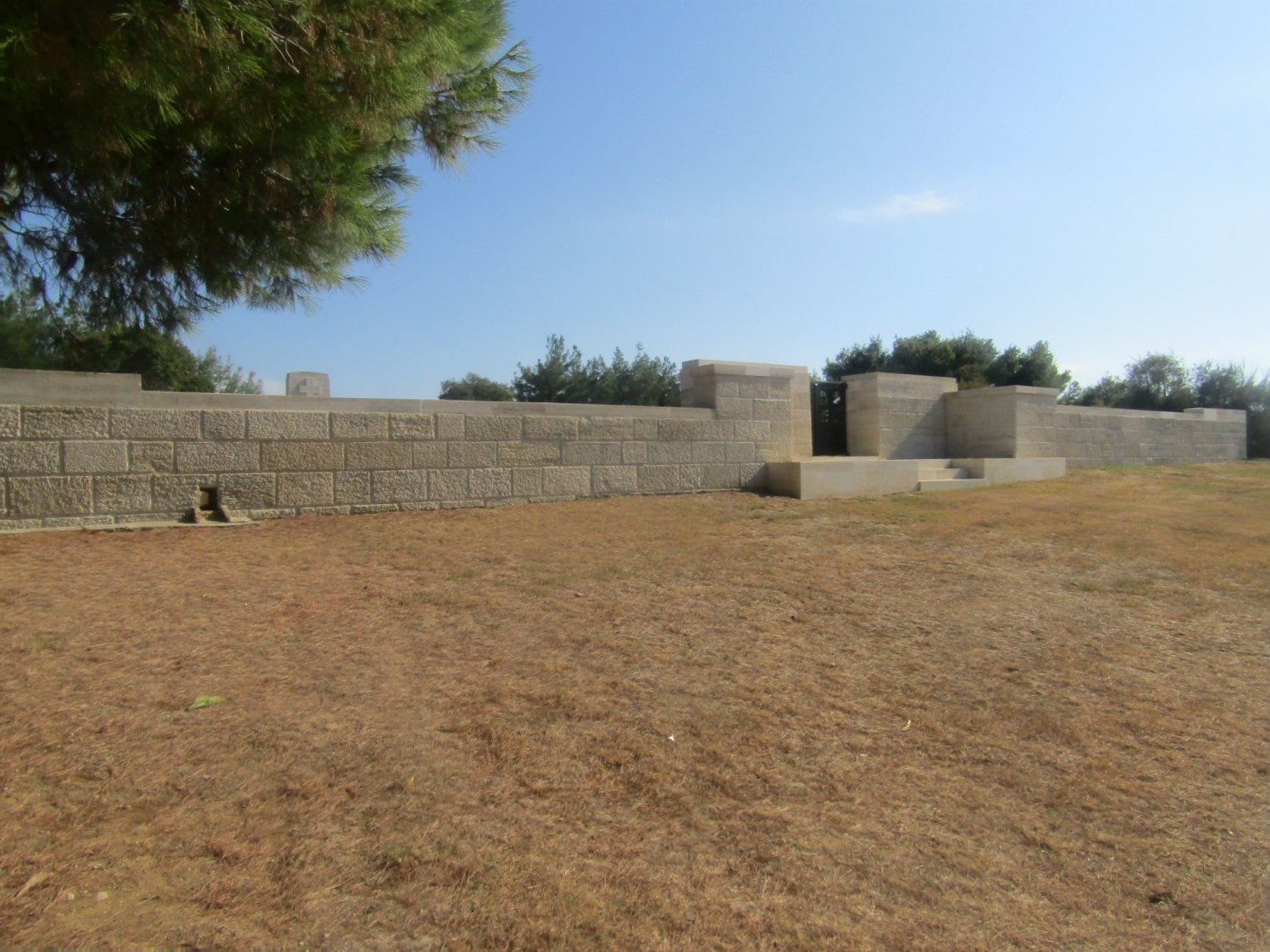
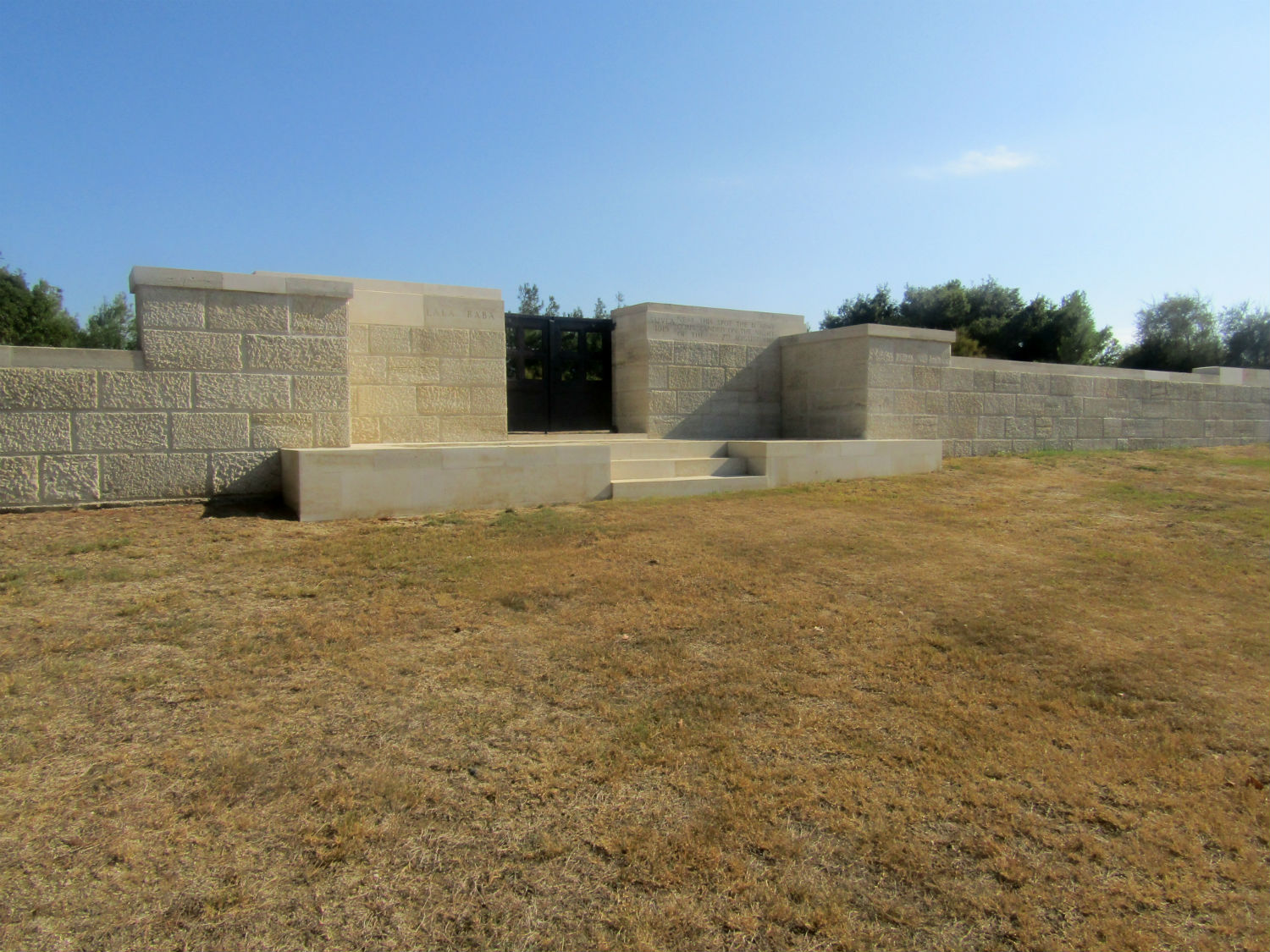
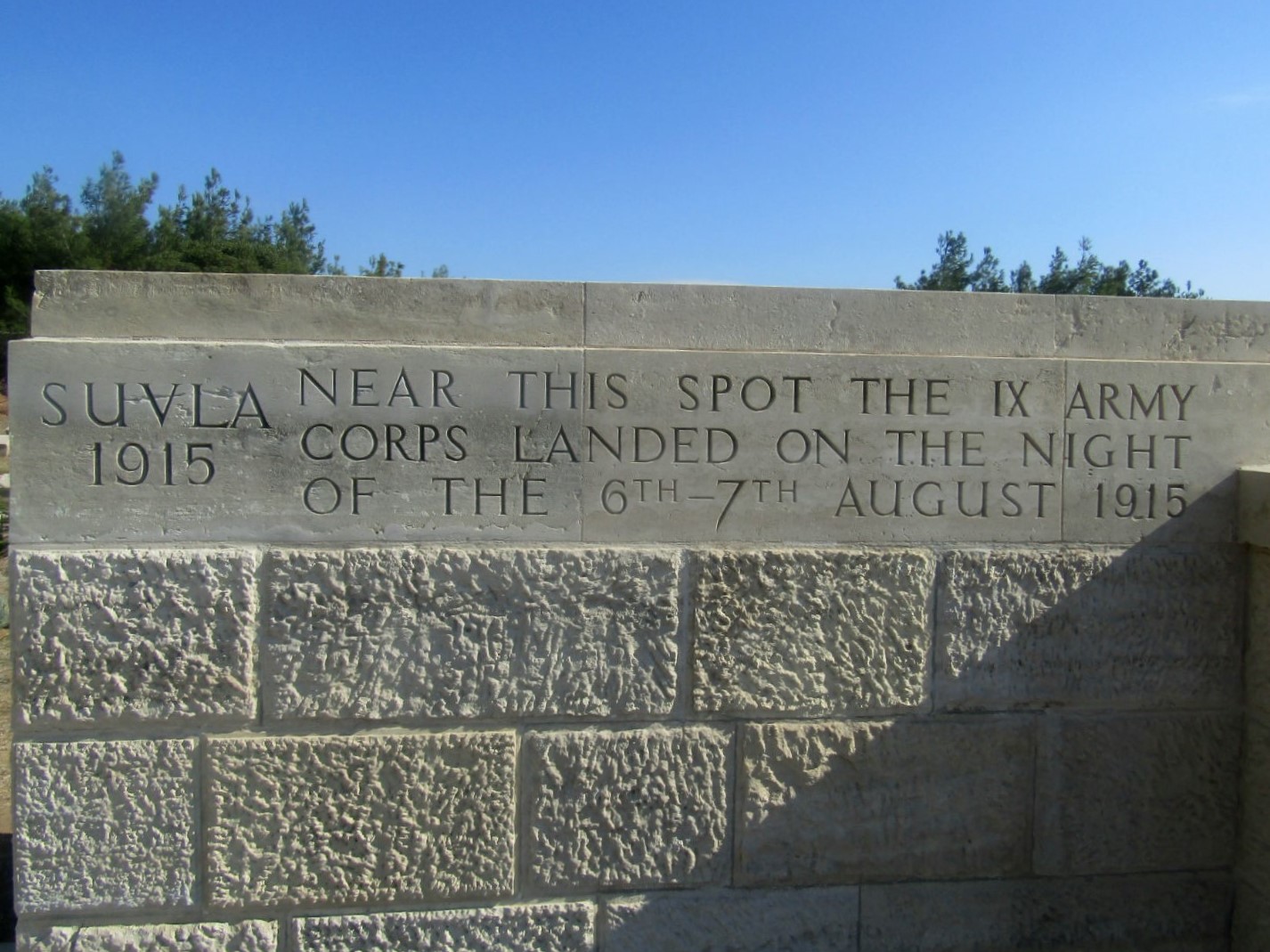
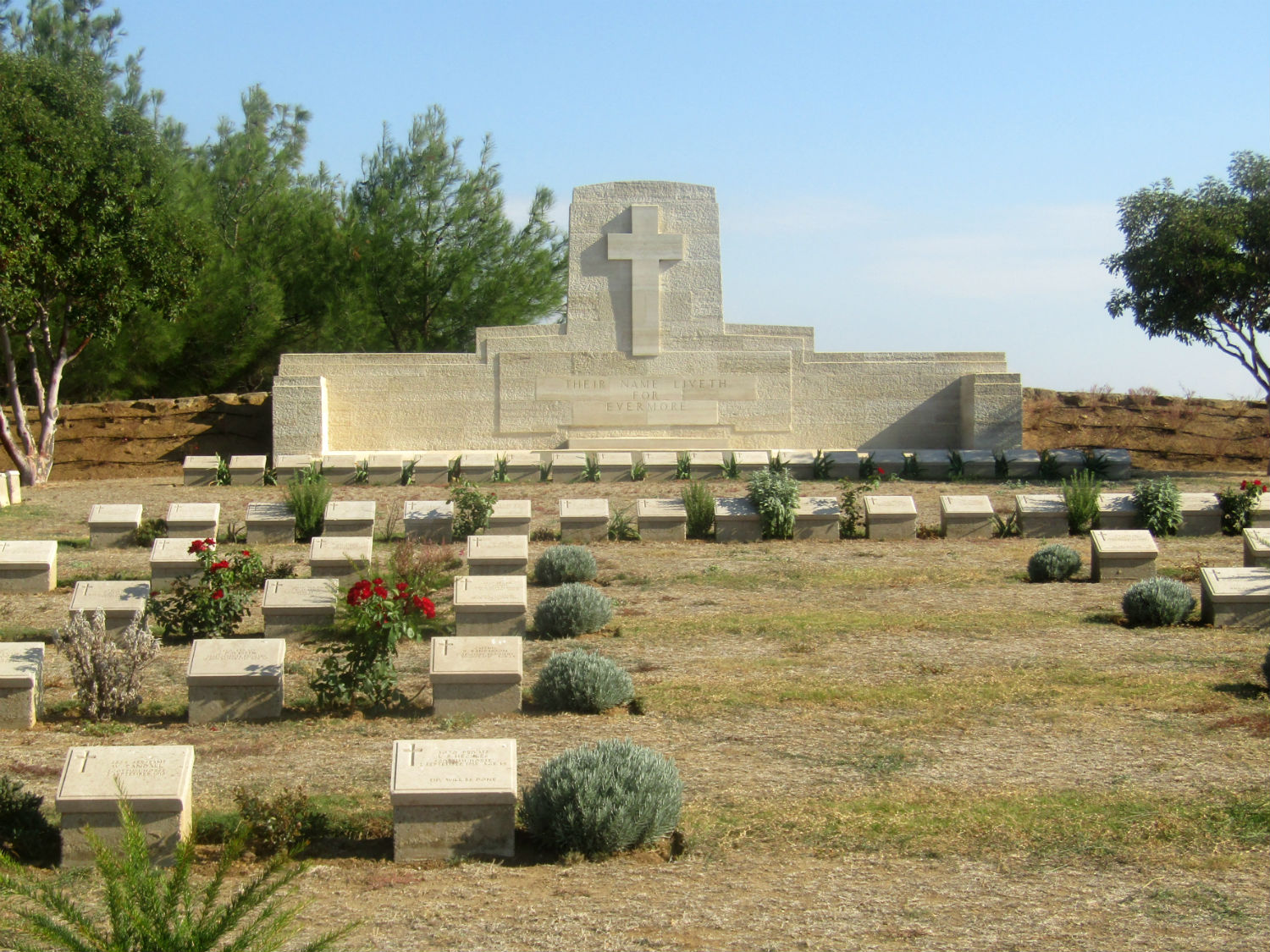

 Lala Baba Cemetery, Suvla Bay, Eceabat District, Çanakkale Province
Lala Baba Cemetery, Suvla Bay, Eceabat District, Çanakkale Province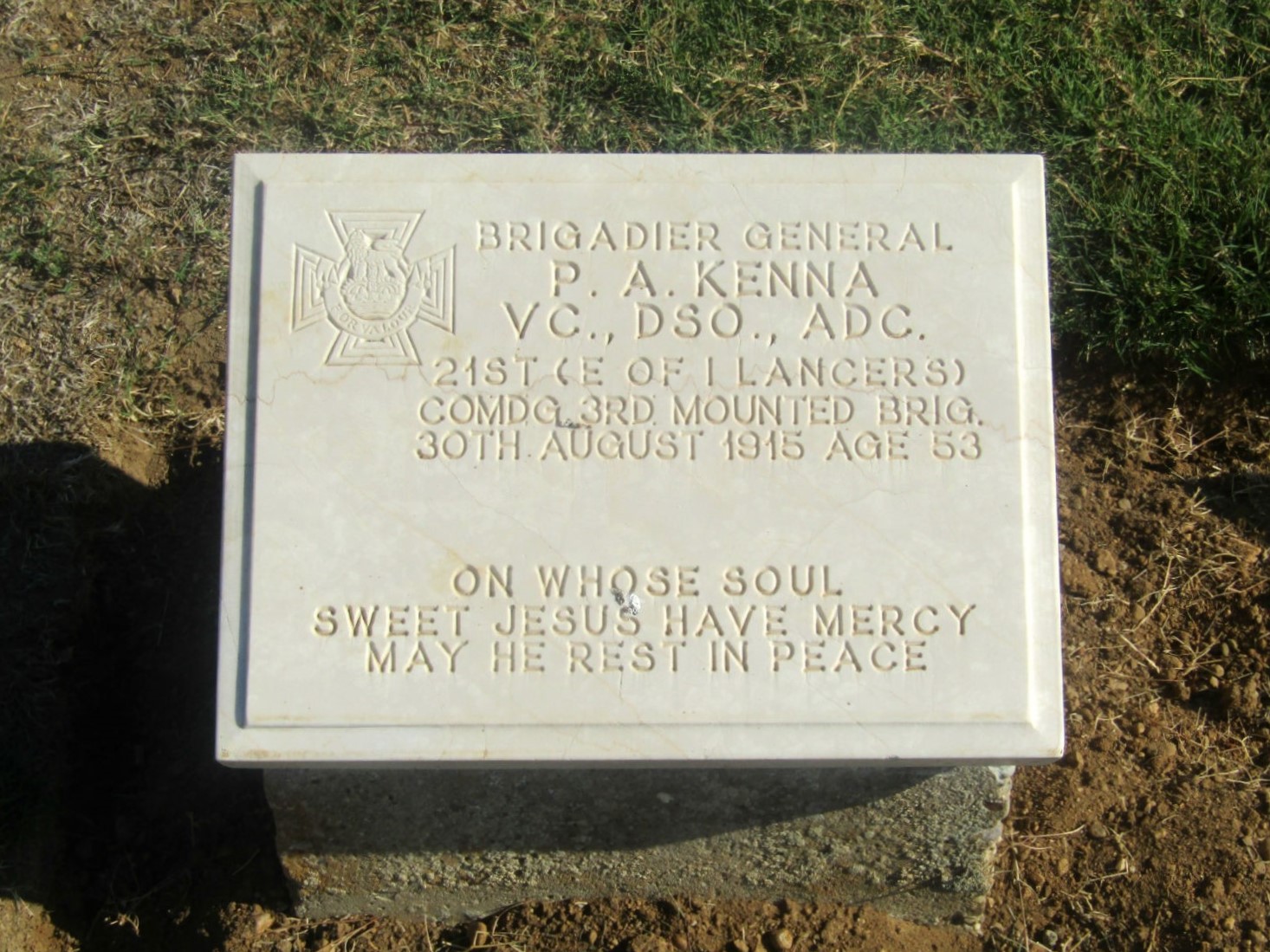


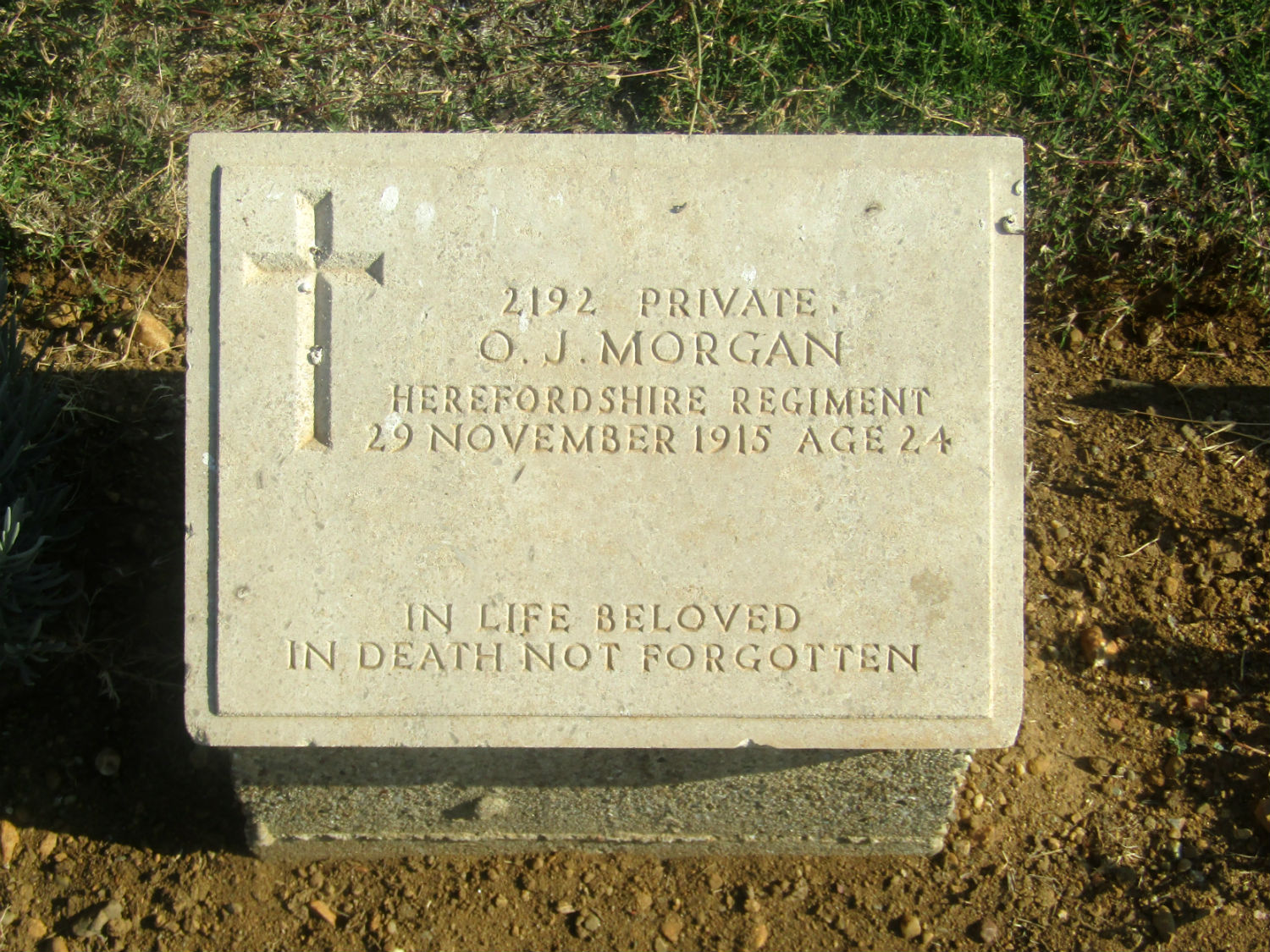

 The Graves of Brigadier General P.A. Kenna, VC, DSO, ADC and the Men of the 1/1st Hereford Regiment,
The Graves of Brigadier General P.A. Kenna, VC, DSO, ADC and the Men of the 1/1st Hereford Regiment,Lala Baba Cemetery, Suvla Bay, Eceabat District, Çanakkale Province
Brigadier General Paul Aloysius Kenna, VC, DSO (16 August 1862 – 30 August 1915) was an English-born British Army officer of Irish descent and recipient of the Victoria Cross (VC), the highest and most prestigious award for gallantry in the face of the enemy that could be awarded to British and British Empire forces.
Kenna was commissioned into the British Army as a lieutenant in the 21st Lancers (Empress of India's) on 25 August 1886, and promoted to captain on 12 July 1895. He was 36 years old, serving as a captain in the 21st Lancers during the Sudan Campaign when the following deed took place for which he was awarded the VC: On 2 September 1898, at the Battle of Omdurman, Sudan, when a major of the 21st Lancers was in danger, as his horse had been shot in the charge, Captain Kenna took the major up on his own horse, to a place of safety. After the charge Captain Kenna returned to help Lieutenant De Montmorency who was trying to recover the body of an officer who had been killed.
He later served in the Second Boer War in South Africa 1899–1900, and was promoted a brevet major on 29 November 1900. For his service during the war, he was appointed a Companion of the Distinguished Service Order (DSO) in the South Africa Honours list published on 26 June 1902. Following the end of the war that month Kenna returned to the United Kingdom in the RMS Dunottar Castle, which arrived at Southampton in July 1902. He received the substantive rank of major on 7 September 1902, on his appointment to lead a Mounted infantry flying column in Somaliland. In September 1910 he retired with the rank of Colonel from the Regular Army but in April 1912 was appointed to command the Notts and Derby (Yeomanry) Mounted Brigade and on the outbreak of war was appointed Brigadier-General.
Private Charles Dennis Warren, Service Number 2450, Died 15/11/1915, Aged 20, "C" Coy. 1st/1st Bn. Herefordshire Regiment, Son of Andrew and Olivia Warren, of Lower Cross, Ledbury, Herefordshire.
Private F. W. Williams, Service Number 2226, Died 29/11/1915, "D" Coy. 1st/1st Bn. Herefordshire Regiment, Grandson of Mrs. E. Williams, of 112, Homend St., Ledbury, Herefordshire.
Private. Oscar John Morgan, Service Number 2192, Died 29/11/1915, Aged 24, "B" Coy. 1st/1st Bn. Herefordshire Regiment, Son of Mrs. Modica Morgan; husband of Gertrude Lucy Morgan, of 69, Widemarsh St., Hereford.
Private James Charles Innes, Service Number 1661, Died 29/11/1915, Aged 22, 1st/1st Bn. Herefordshire Regiment Son of Elizabeth Innes, of 7, Edde Cross Street, Ross-on-Wye, Herefordshire, and the late Richard Innes.
Private Henry Thomas Whittaker, Service Number 2212, Died 07/11/1915, Herefordshire Regiment, Son of George and Elizabeth Whittaker, of Pike's Corner, Woolhope, Herefordshire.
Kenna was commissioned into the British Army as a lieutenant in the 21st Lancers (Empress of India's) on 25 August 1886, and promoted to captain on 12 July 1895. He was 36 years old, serving as a captain in the 21st Lancers during the Sudan Campaign when the following deed took place for which he was awarded the VC: On 2 September 1898, at the Battle of Omdurman, Sudan, when a major of the 21st Lancers was in danger, as his horse had been shot in the charge, Captain Kenna took the major up on his own horse, to a place of safety. After the charge Captain Kenna returned to help Lieutenant De Montmorency who was trying to recover the body of an officer who had been killed.
He later served in the Second Boer War in South Africa 1899–1900, and was promoted a brevet major on 29 November 1900. For his service during the war, he was appointed a Companion of the Distinguished Service Order (DSO) in the South Africa Honours list published on 26 June 1902. Following the end of the war that month Kenna returned to the United Kingdom in the RMS Dunottar Castle, which arrived at Southampton in July 1902. He received the substantive rank of major on 7 September 1902, on his appointment to lead a Mounted infantry flying column in Somaliland. In September 1910 he retired with the rank of Colonel from the Regular Army but in April 1912 was appointed to command the Notts and Derby (Yeomanry) Mounted Brigade and on the outbreak of war was appointed Brigadier-General.
Private Charles Dennis Warren, Service Number 2450, Died 15/11/1915, Aged 20, "C" Coy. 1st/1st Bn. Herefordshire Regiment, Son of Andrew and Olivia Warren, of Lower Cross, Ledbury, Herefordshire.
Private F. W. Williams, Service Number 2226, Died 29/11/1915, "D" Coy. 1st/1st Bn. Herefordshire Regiment, Grandson of Mrs. E. Williams, of 112, Homend St., Ledbury, Herefordshire.
Private. Oscar John Morgan, Service Number 2192, Died 29/11/1915, Aged 24, "B" Coy. 1st/1st Bn. Herefordshire Regiment, Son of Mrs. Modica Morgan; husband of Gertrude Lucy Morgan, of 69, Widemarsh St., Hereford.
Private James Charles Innes, Service Number 1661, Died 29/11/1915, Aged 22, 1st/1st Bn. Herefordshire Regiment Son of Elizabeth Innes, of 7, Edde Cross Street, Ross-on-Wye, Herefordshire, and the late Richard Innes.
Private Henry Thomas Whittaker, Service Number 2212, Died 07/11/1915, Herefordshire Regiment, Son of George and Elizabeth Whittaker, of Pike's Corner, Woolhope, Herefordshire.
Conclusion……..
The route today has taken us along the coast where the Anzacs landed on the 25th of April 1915. The beach area, offering some protection from the hills to the east, was the bridgehead allowing delivery of supplies under the protection of the Royal Navy and was the means for evacuation of casualties. Without this secure area no offensive operation could be attempted.
Çanakkale…….. Returning to Eceabat around 5 pm we have the option to take the ferry across to Çanakkale for an evening meal. Çanakkale is much larger than Eceabat with far more options for dining. The ferry which takes around 25 minutes provides a link between the Gallipoli Peninsula on the European side and the mainland on the Asian side. The ferry runs every hour during the day reducing to one every two hours after midnight until 6.00am
Deciding to take the 6 pm service leaves us with plenty of time for dinner. Arriving into Çanakkale we see a big difference along the shoreline dominated by restaurants and cafés offering incredible choice of cheap Turkish and international cuisine including a McDonald’s I see. However it is a small outlet preparing kebabs that attracts me and the donner kebab is just amazing. After a brief walk around the square we settle down in a beer bar until the 10pm ferry service back to Eceabat.
At the end of the second full day on tour there is still a lot to cover and I would say we are a bit behind our schedule but thankfully there have been no issues since our first evening in Istanbul. Next Page.
Çanakkale…….. Returning to Eceabat around 5 pm we have the option to take the ferry across to Çanakkale for an evening meal. Çanakkale is much larger than Eceabat with far more options for dining. The ferry which takes around 25 minutes provides a link between the Gallipoli Peninsula on the European side and the mainland on the Asian side. The ferry runs every hour during the day reducing to one every two hours after midnight until 6.00am
Deciding to take the 6 pm service leaves us with plenty of time for dinner. Arriving into Çanakkale we see a big difference along the shoreline dominated by restaurants and cafés offering incredible choice of cheap Turkish and international cuisine including a McDonald’s I see. However it is a small outlet preparing kebabs that attracts me and the donner kebab is just amazing. After a brief walk around the square we settle down in a beer bar until the 10pm ferry service back to Eceabat.
At the end of the second full day on tour there is still a lot to cover and I would say we are a bit behind our schedule but thankfully there have been no issues since our first evening in Istanbul. Next Page.
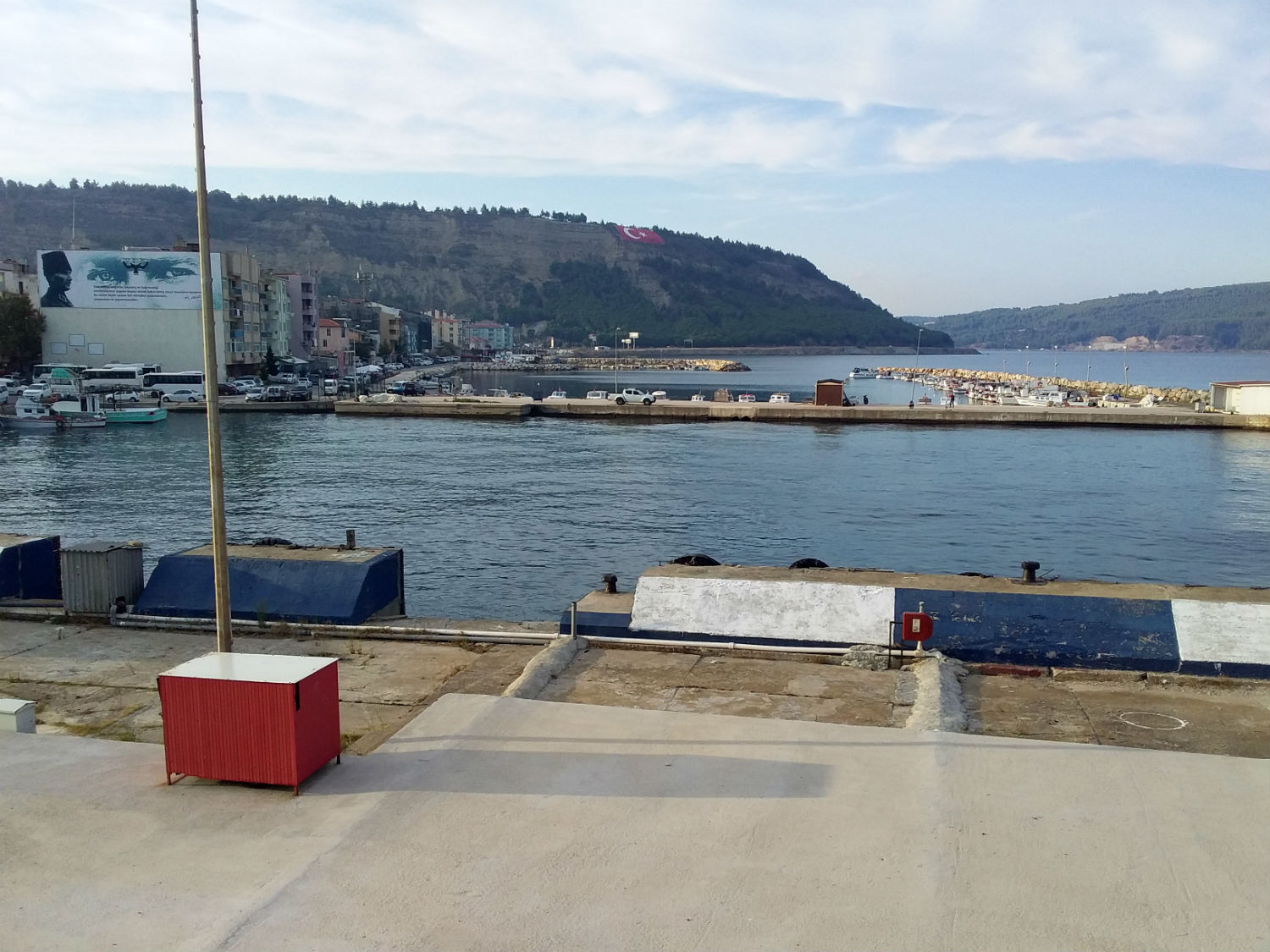
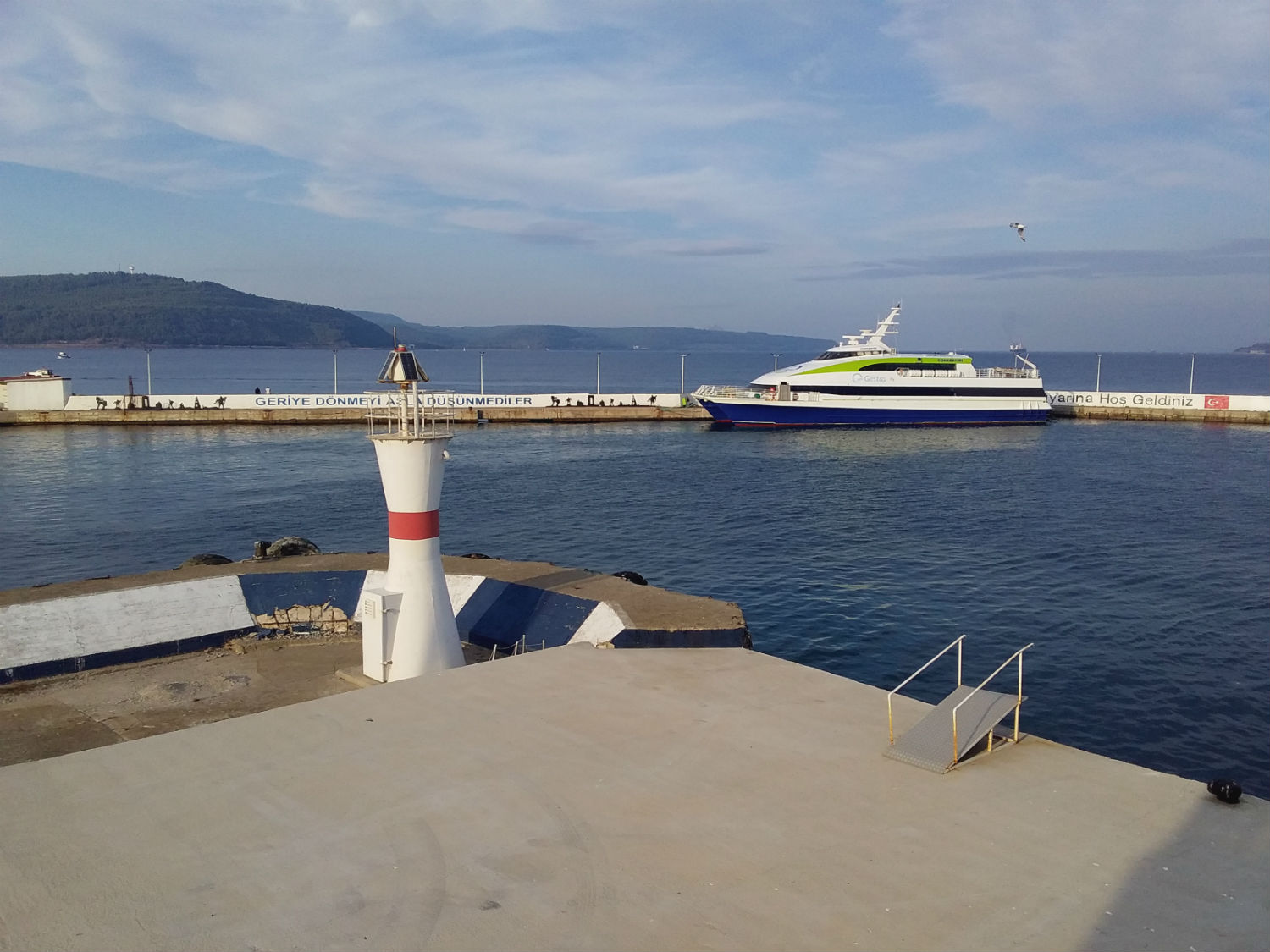
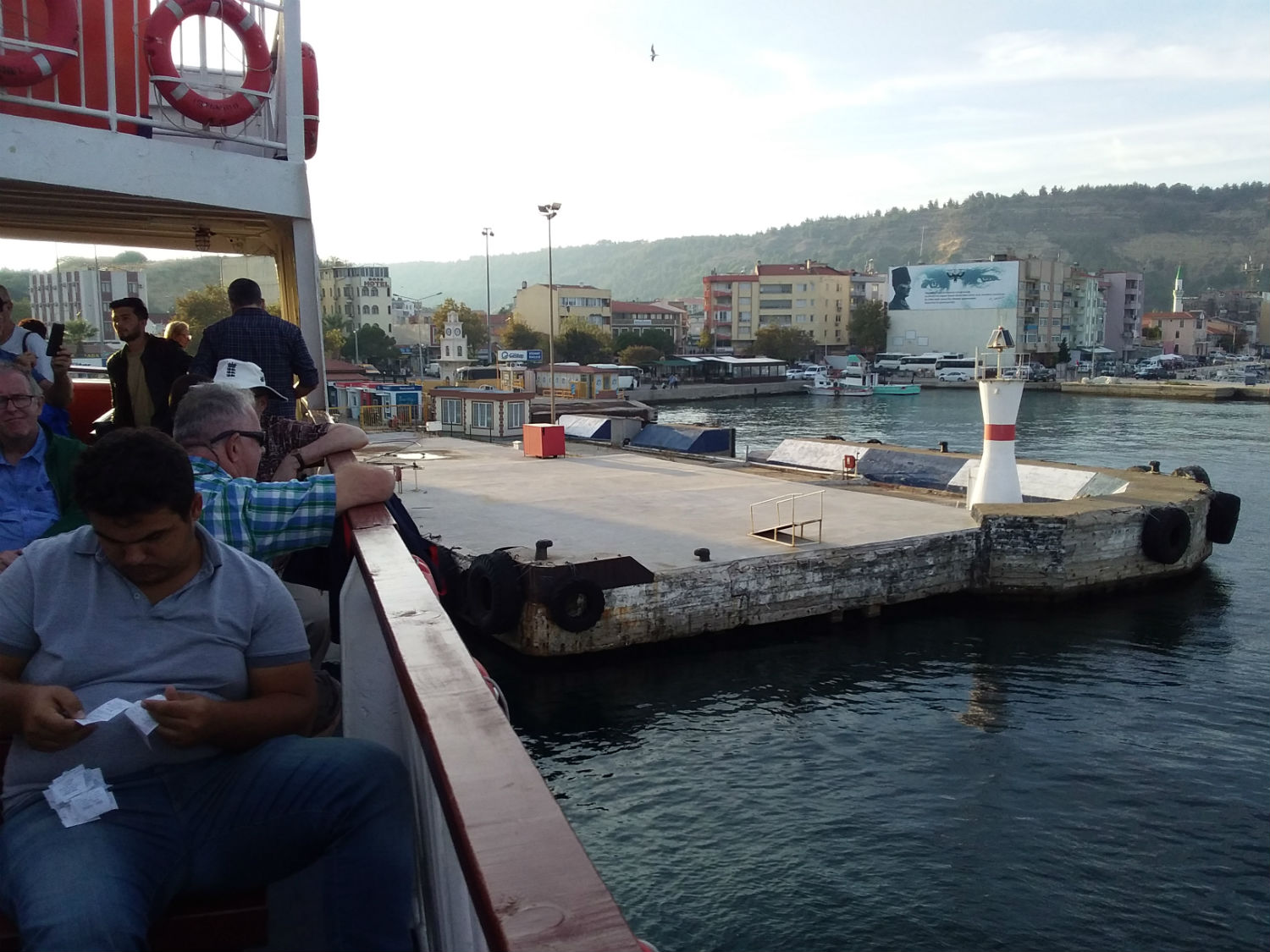 Eceabat Ferry Port, Eceabat, Çanakkale Province
Eceabat Ferry Port, Eceabat, Çanakkale Province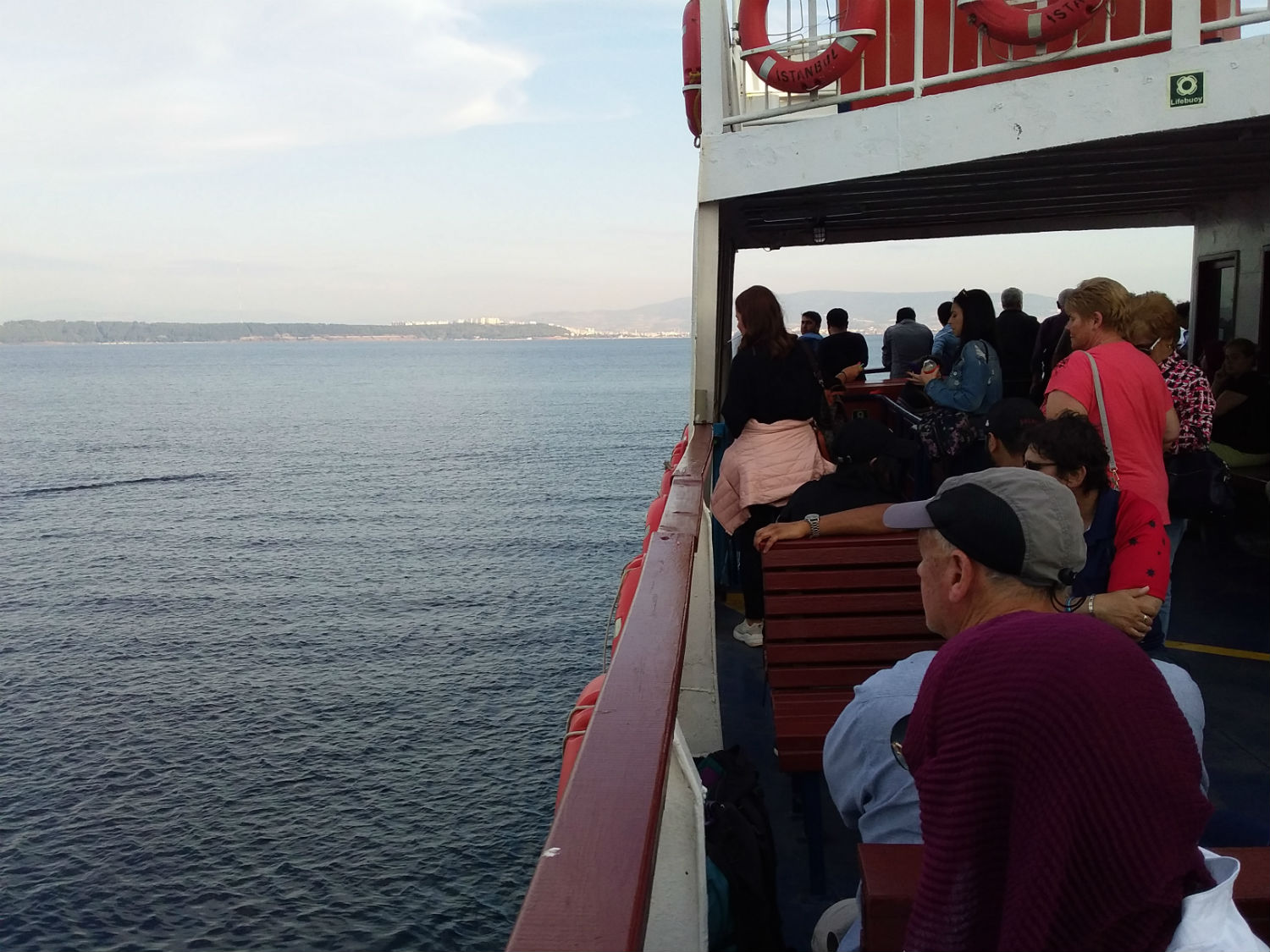
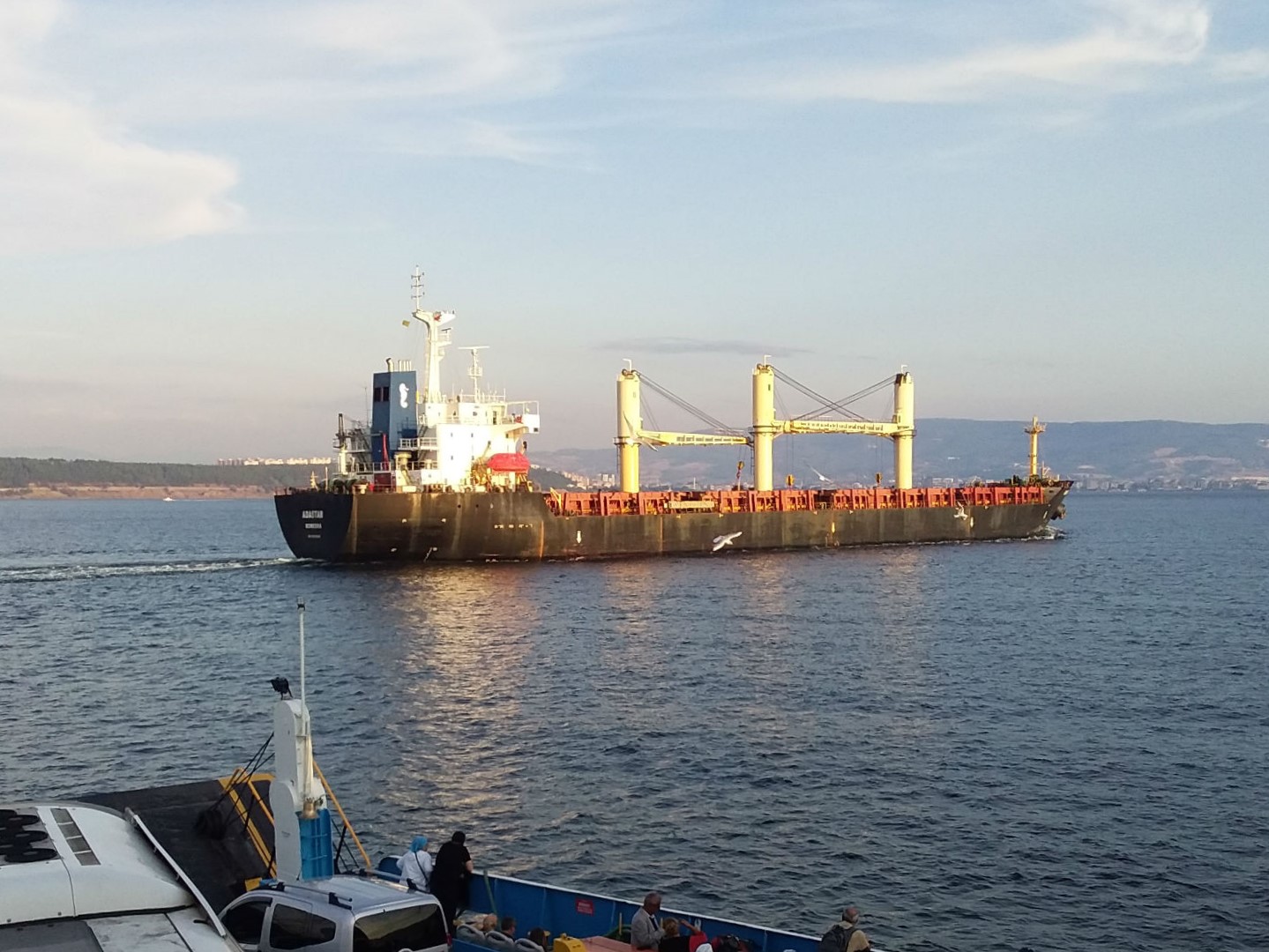
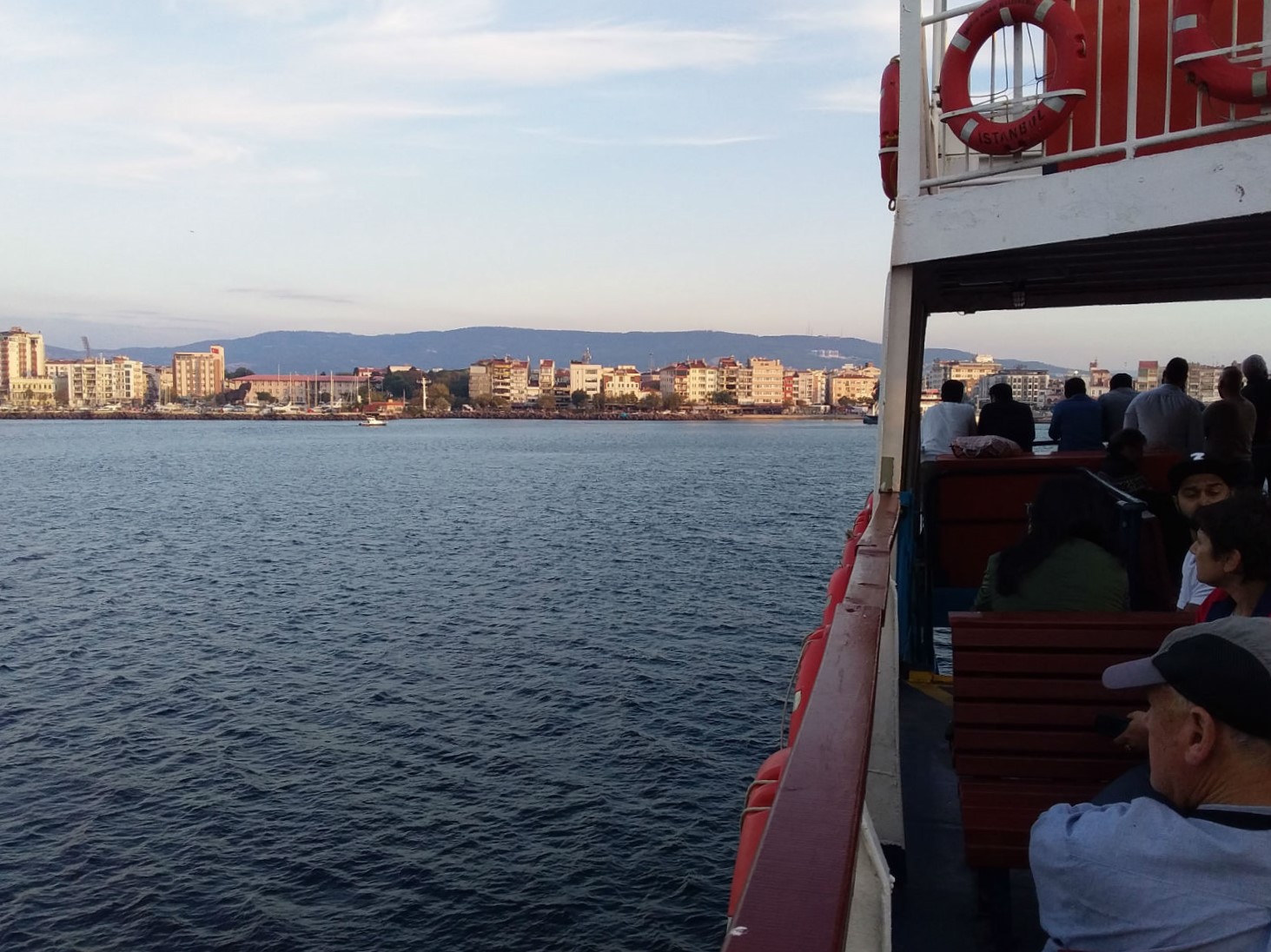 Ferry Crossing, Eceabat to Çanakkale
Ferry Crossing, Eceabat to Çanakkale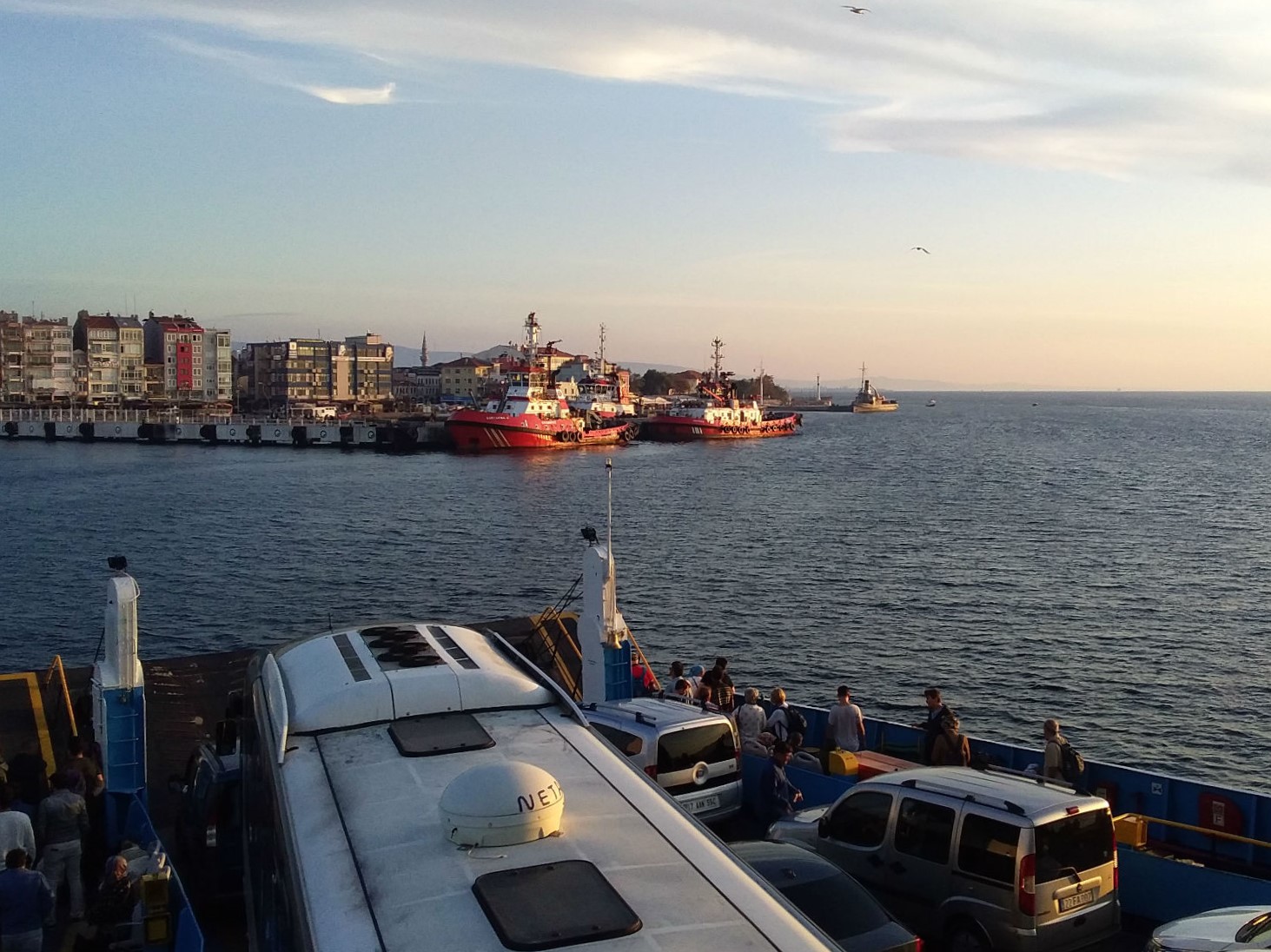

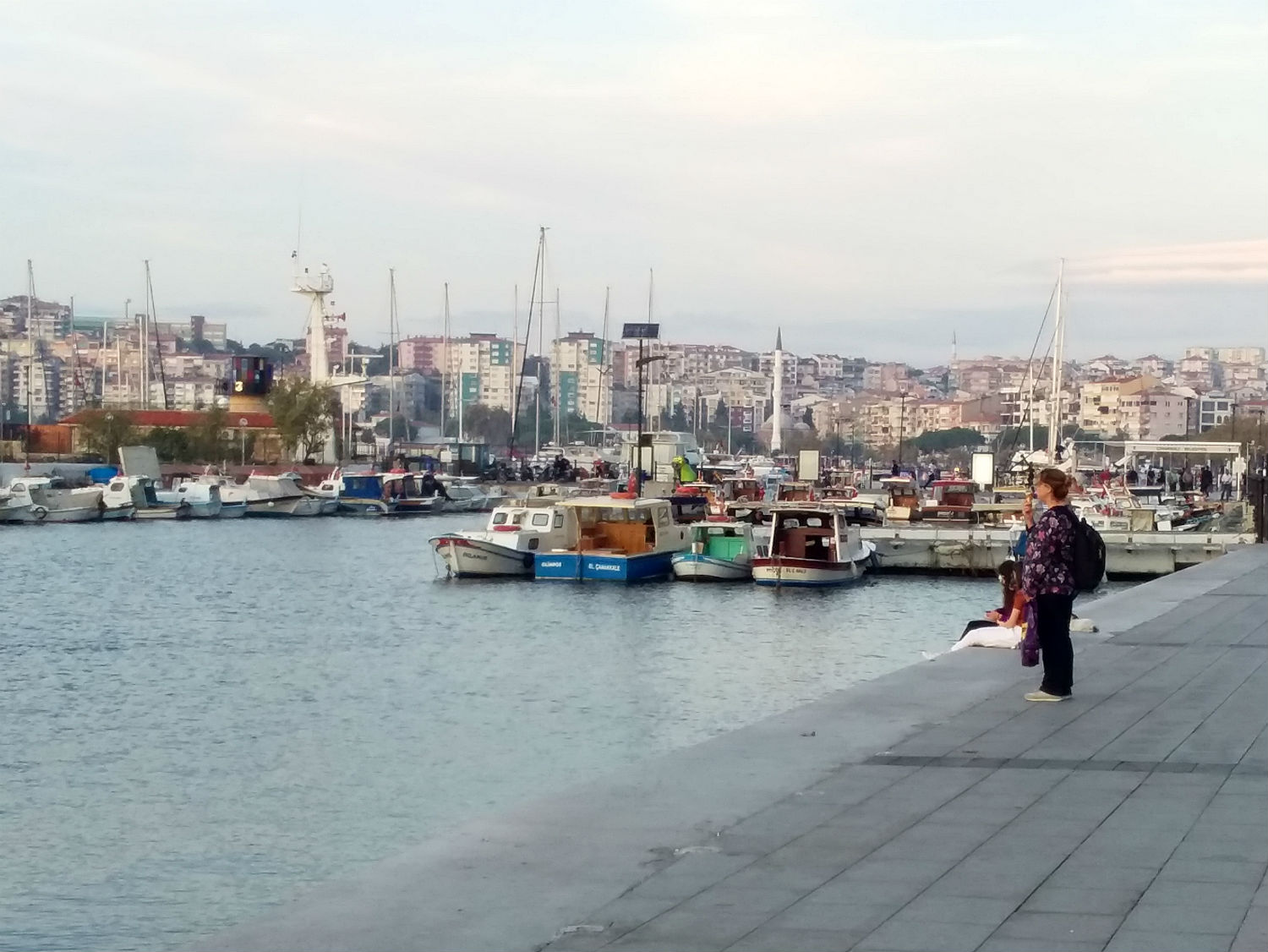 Çanakkale
Çanakkale